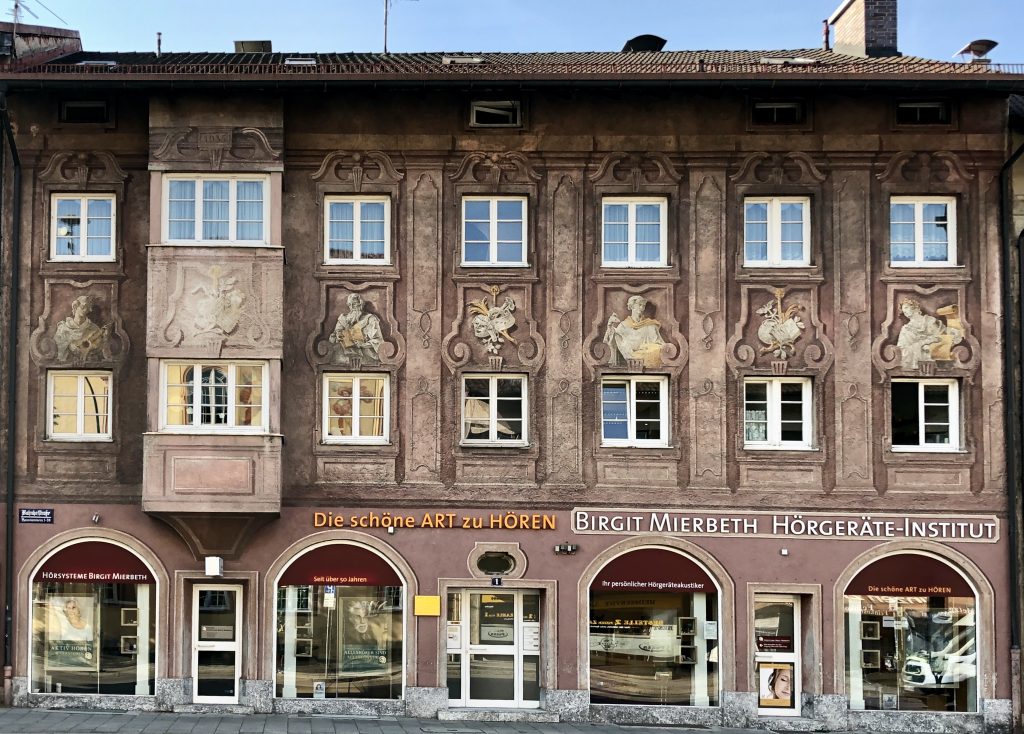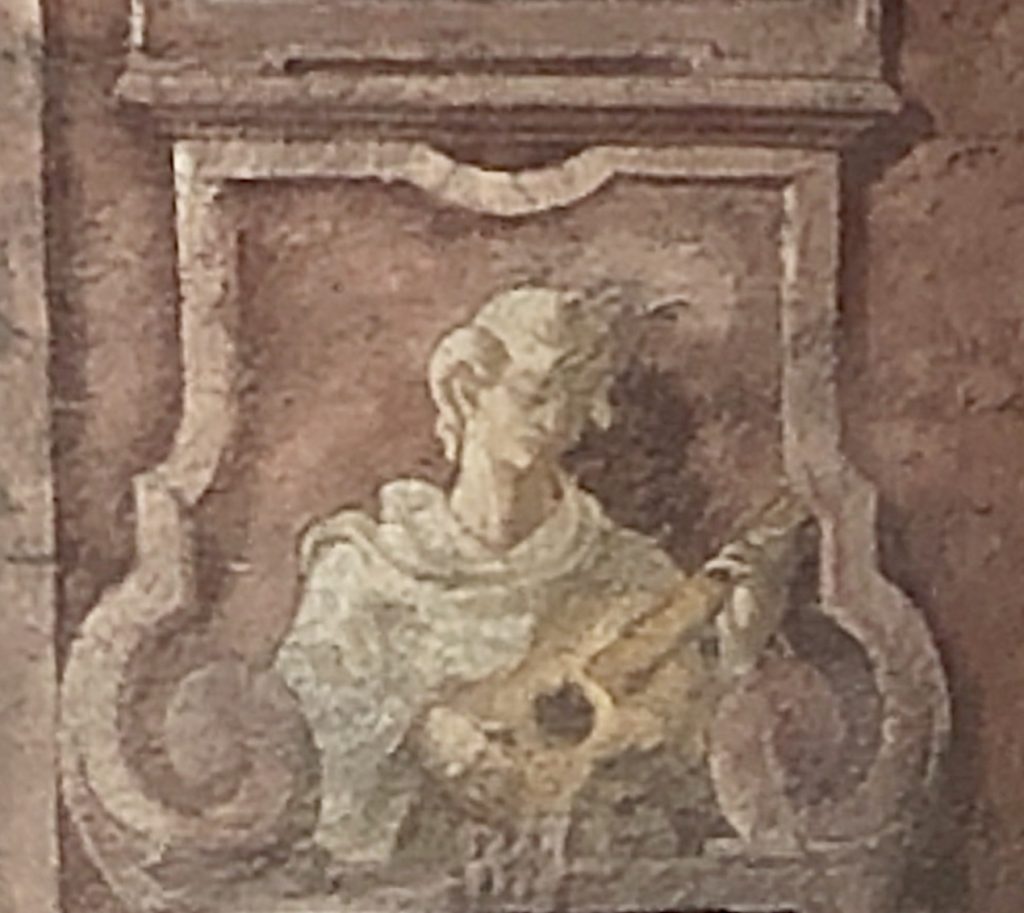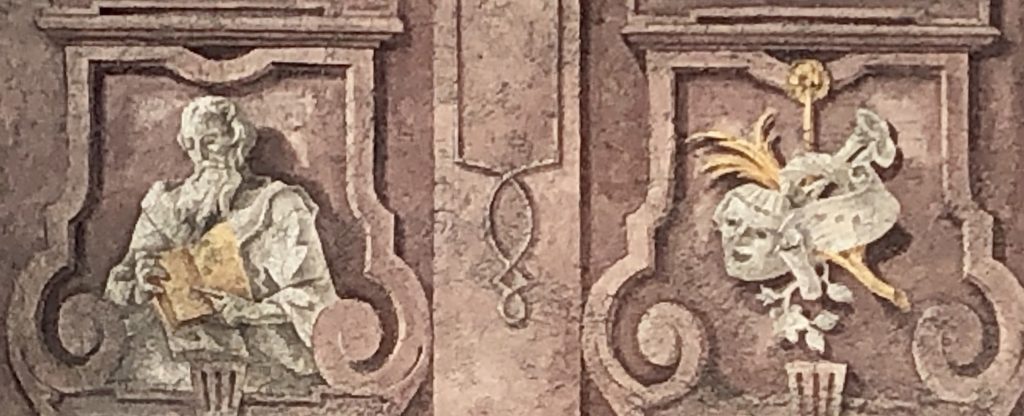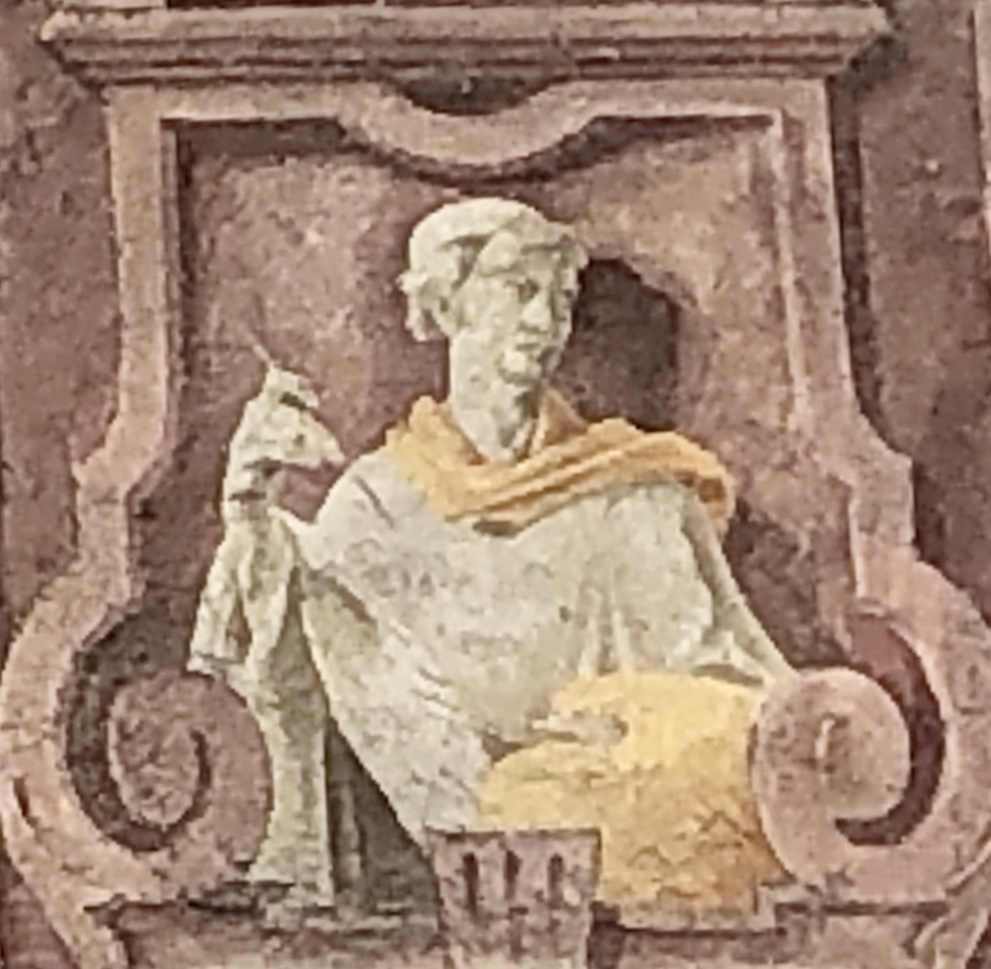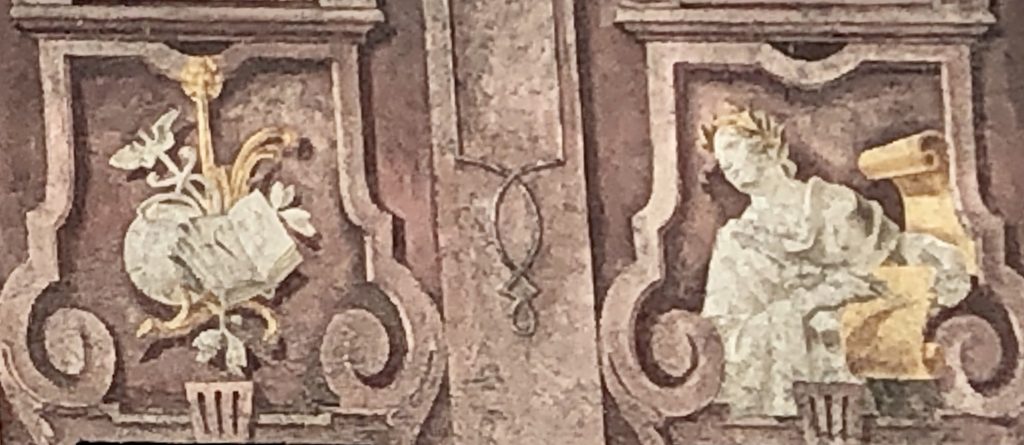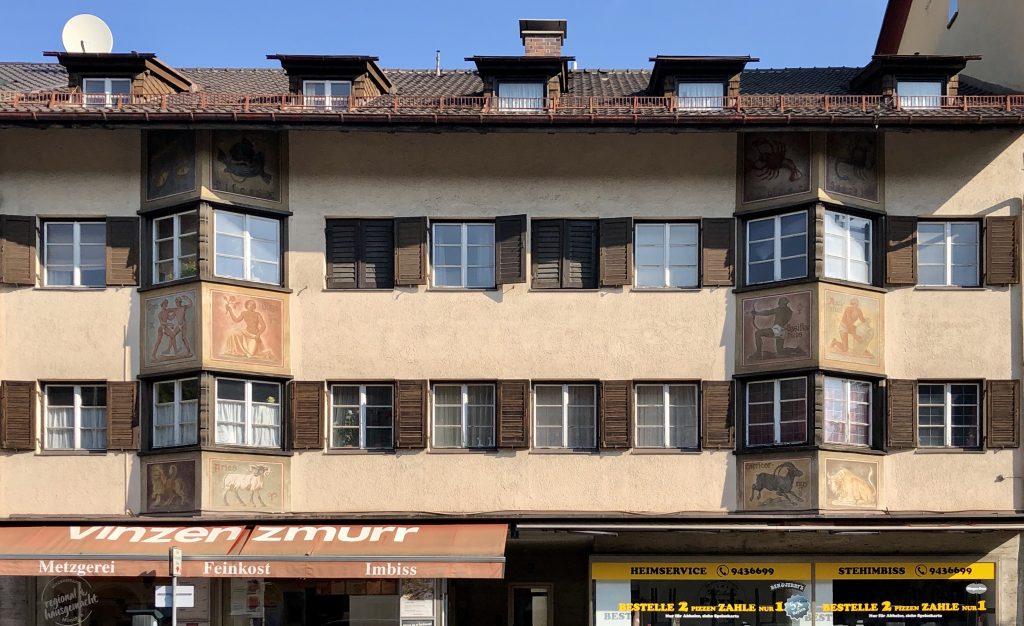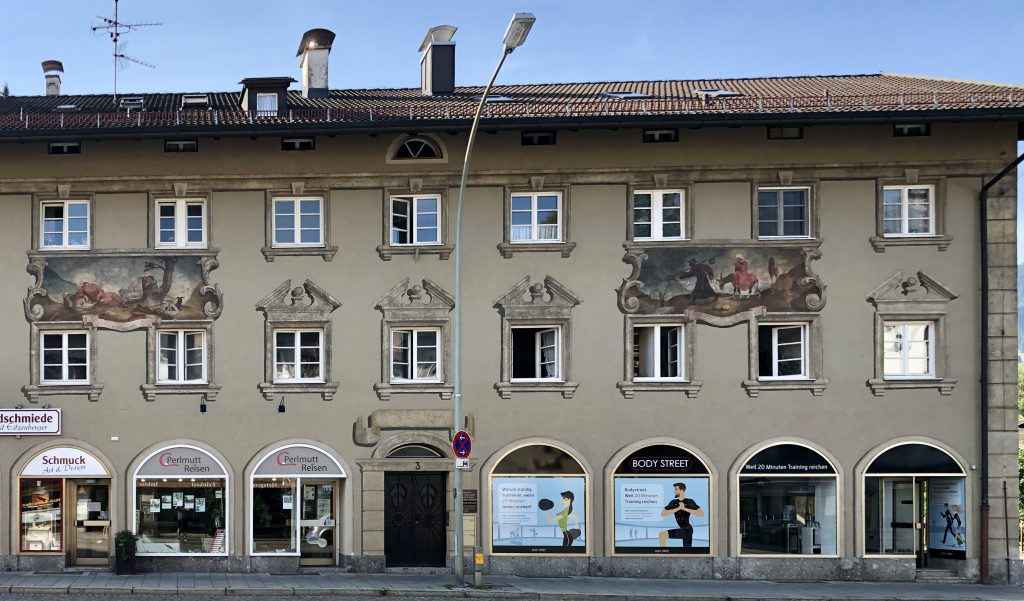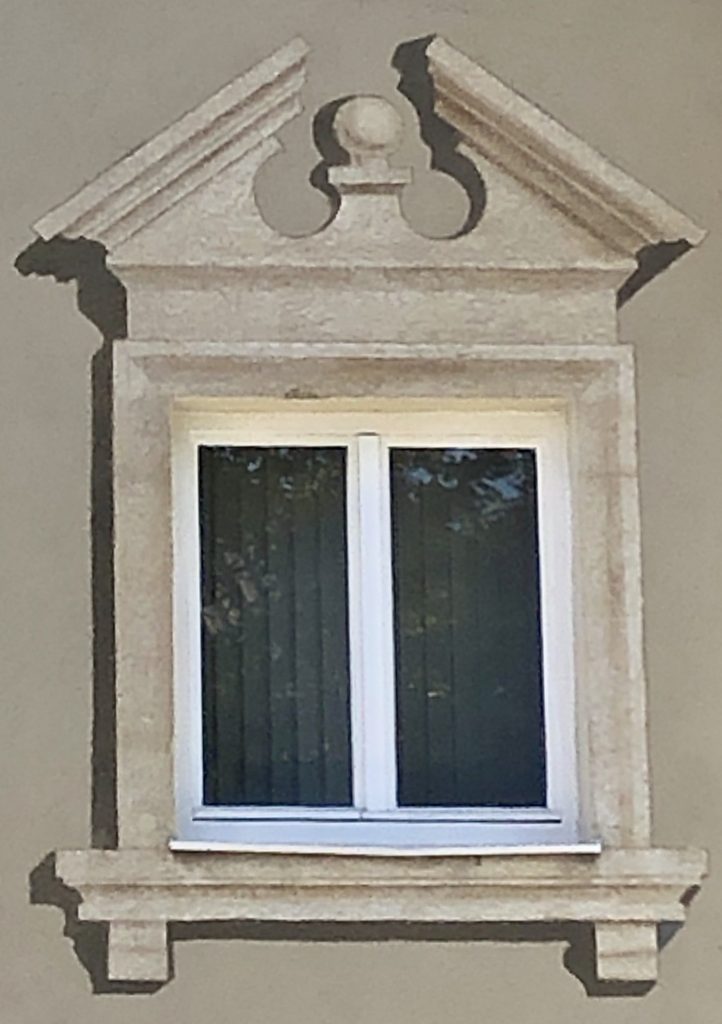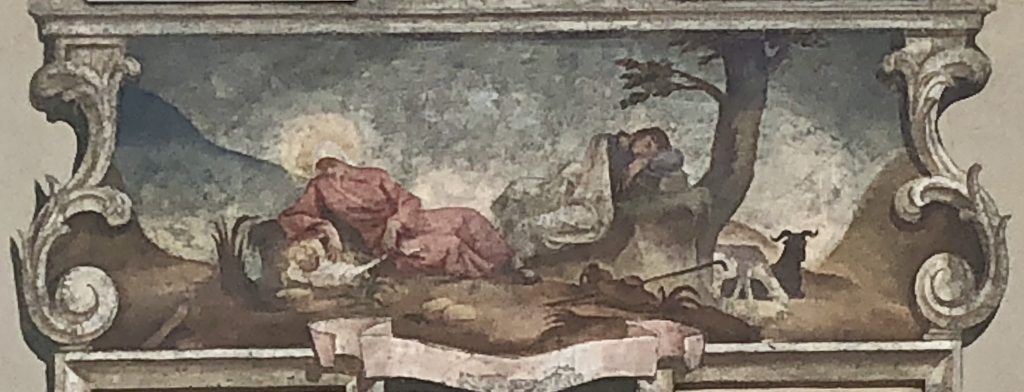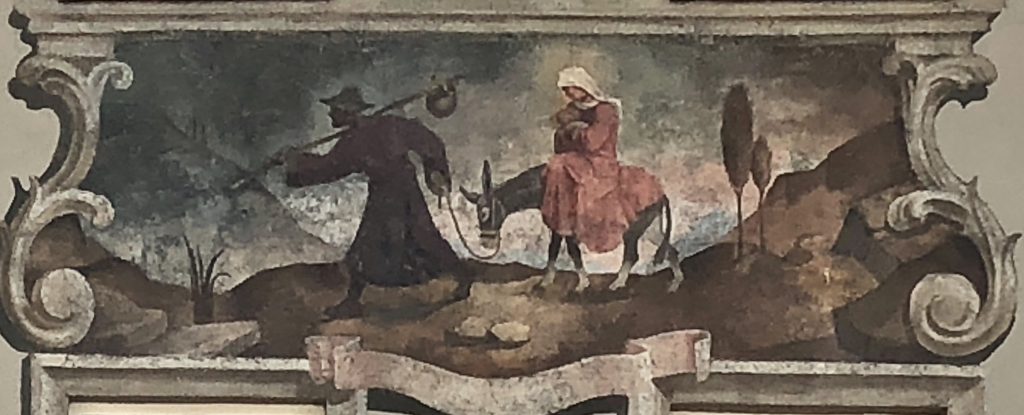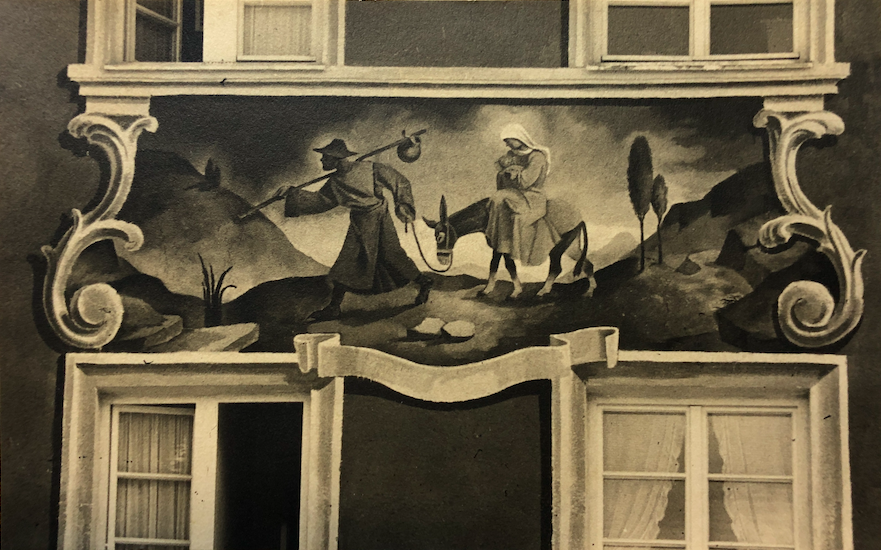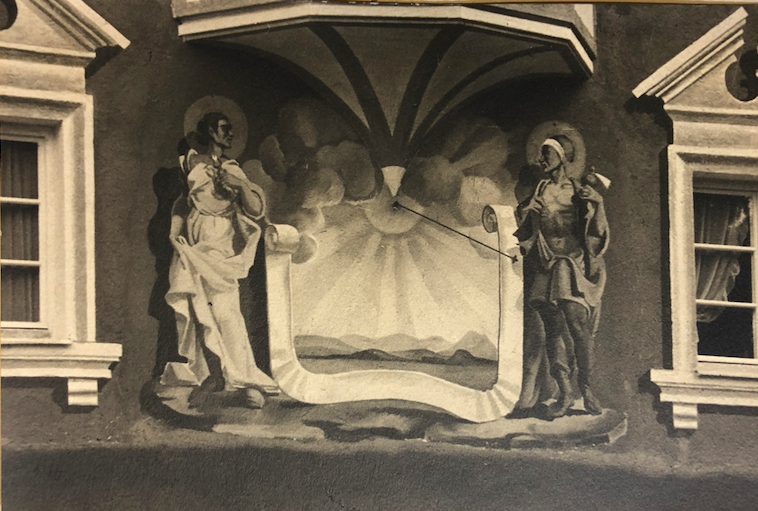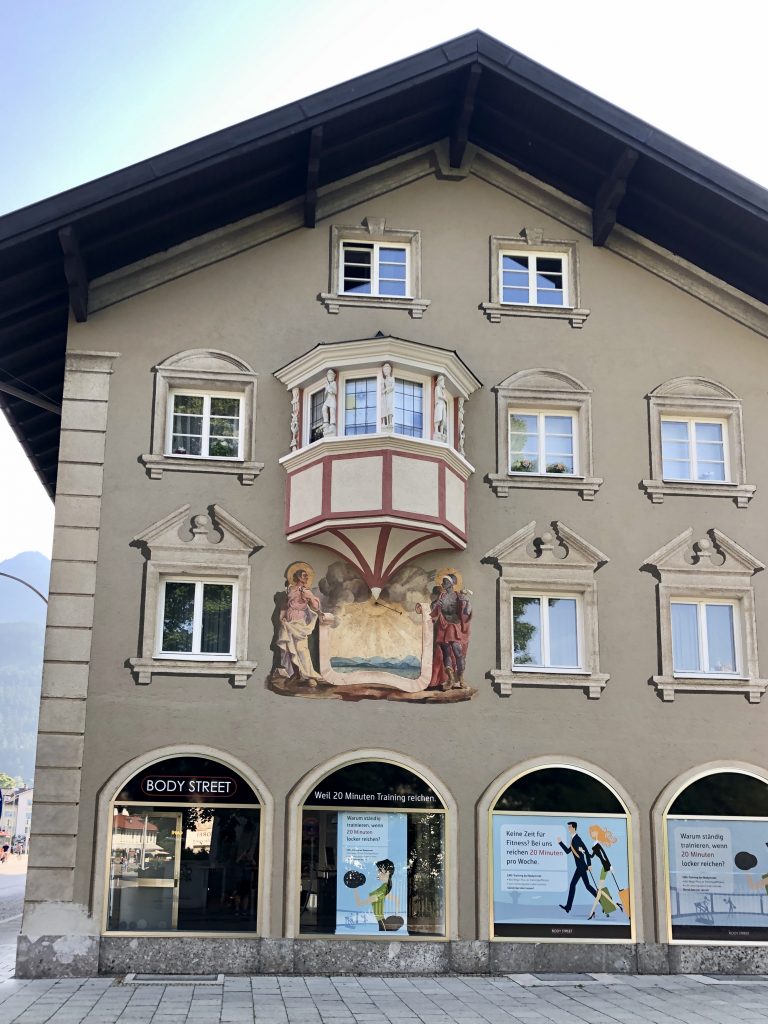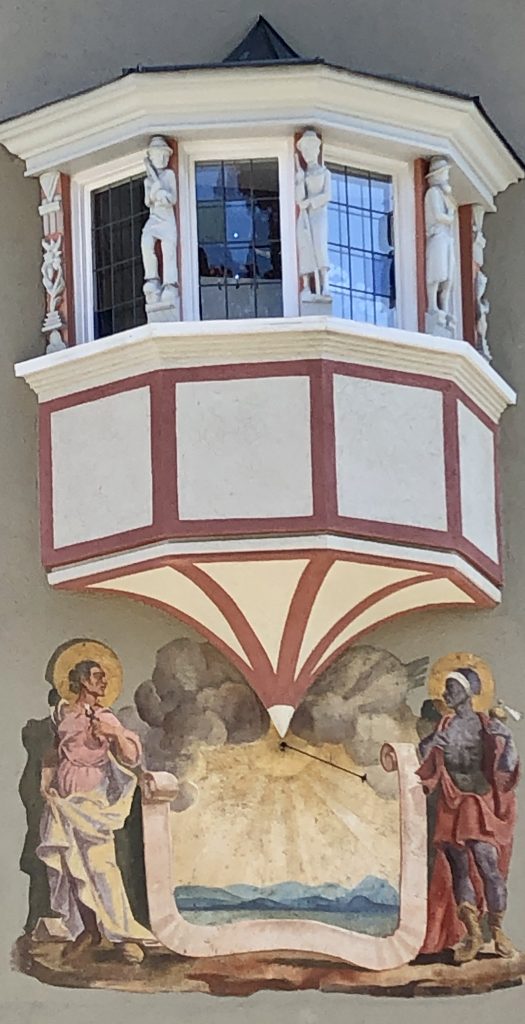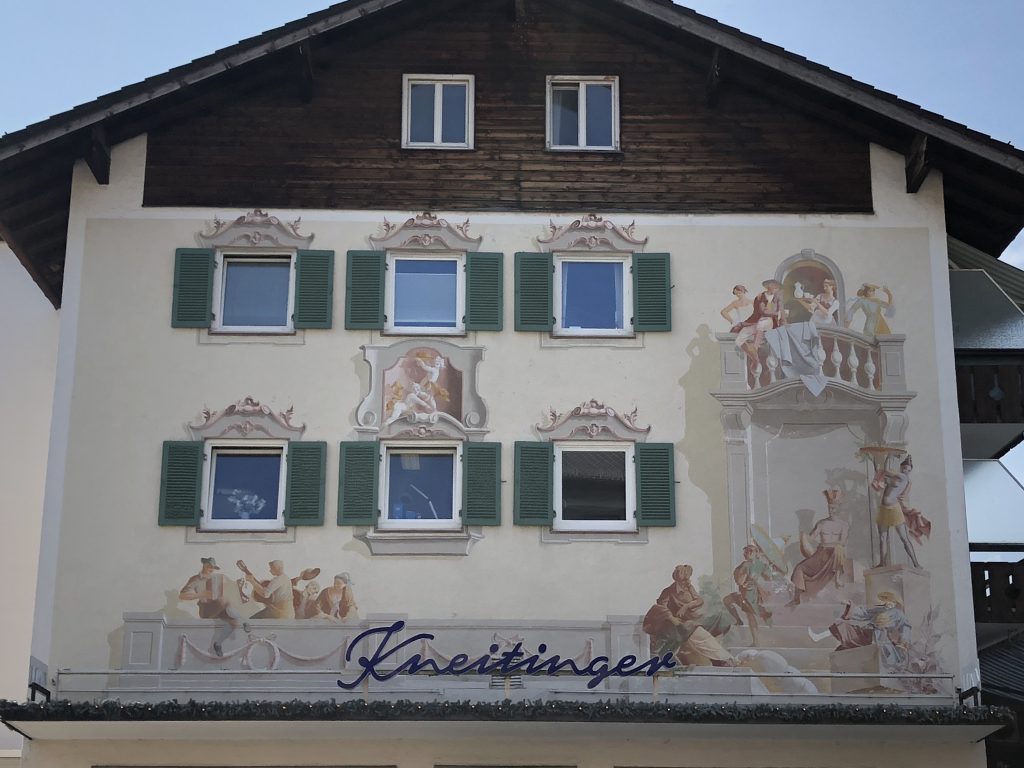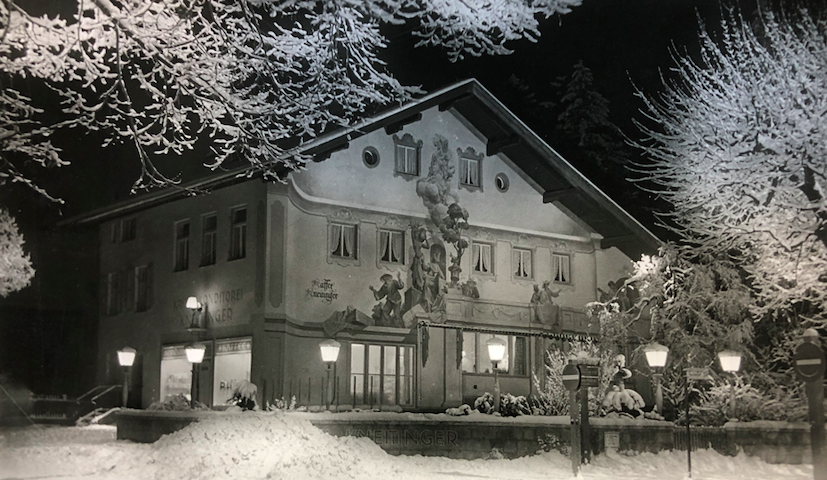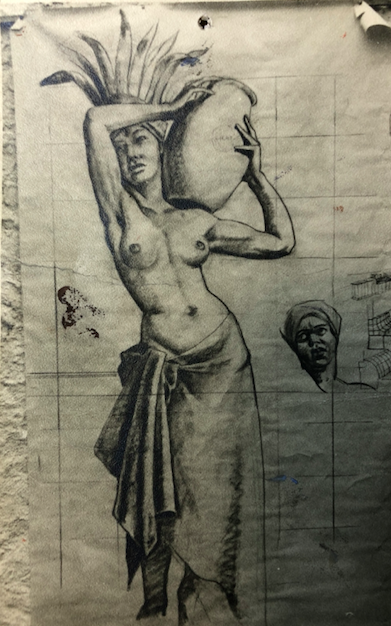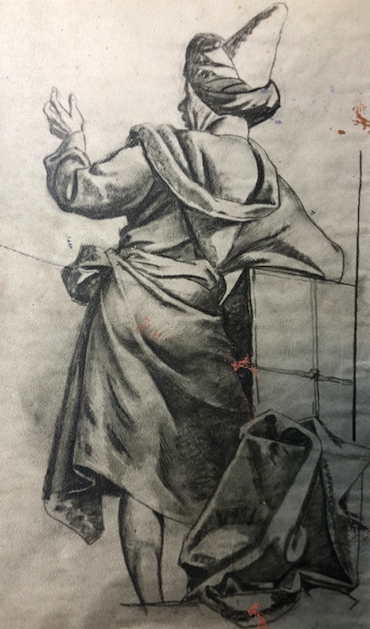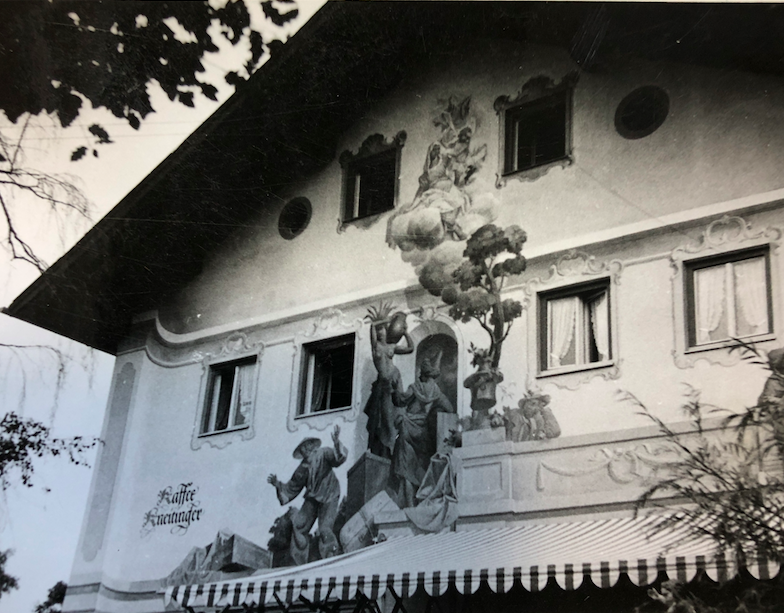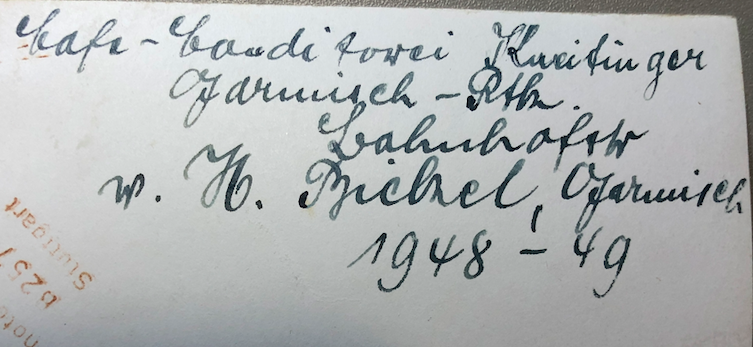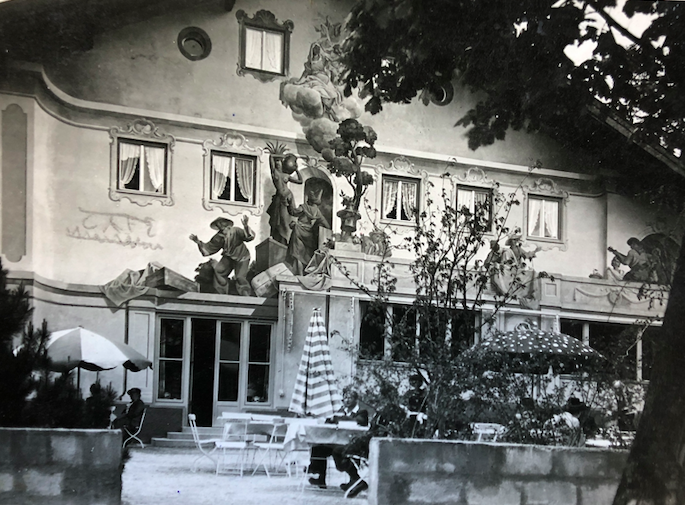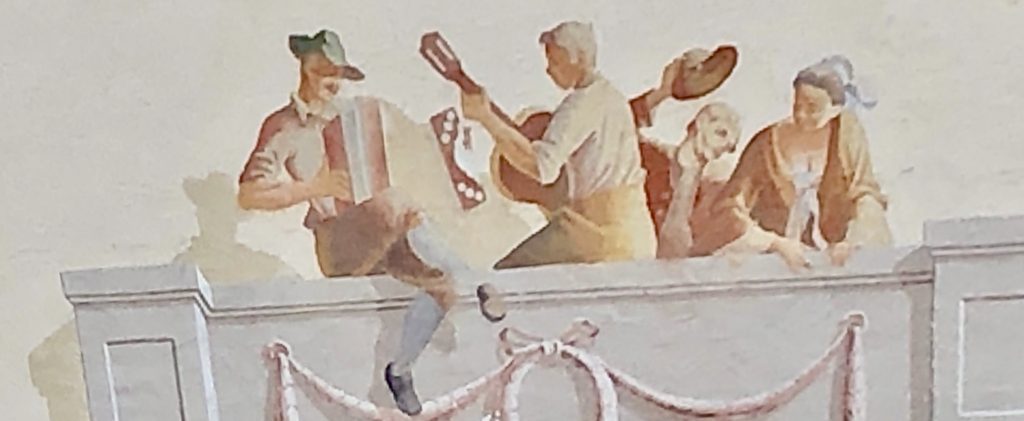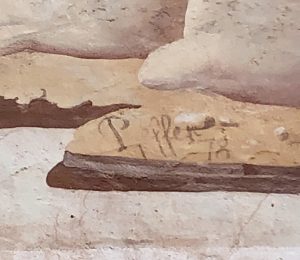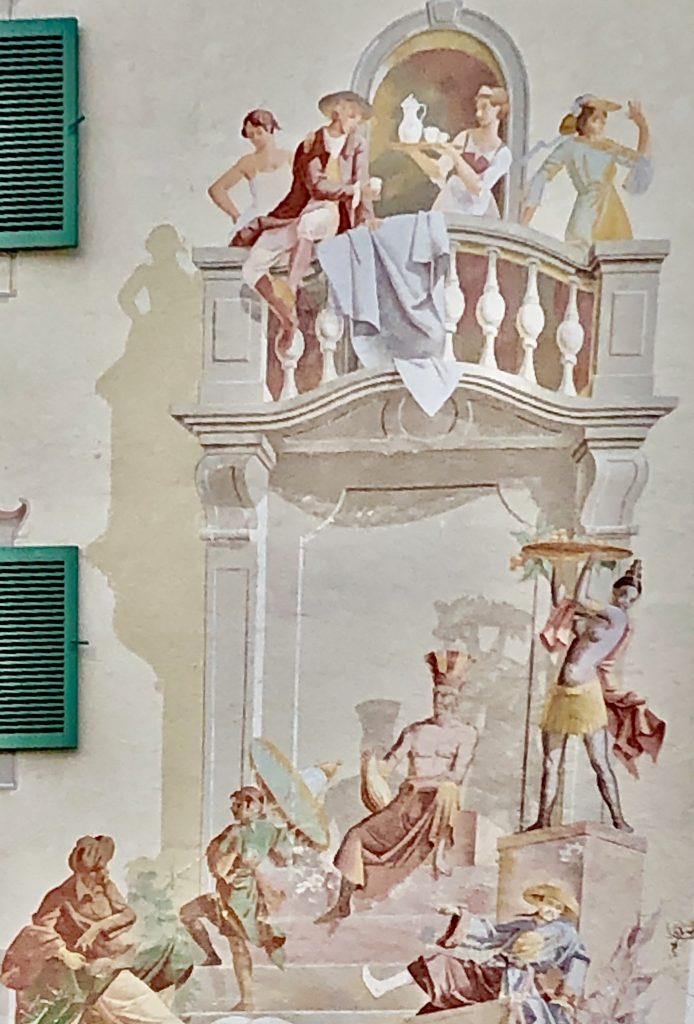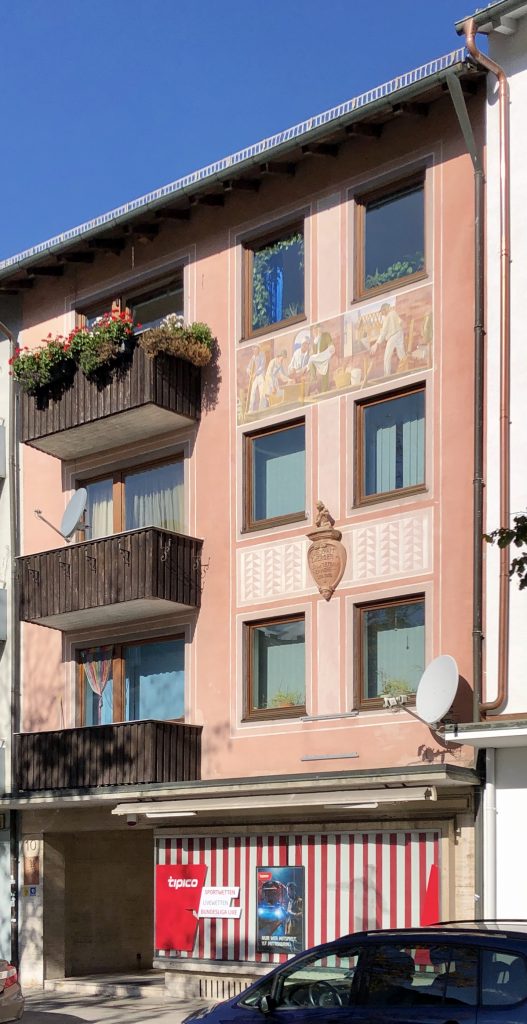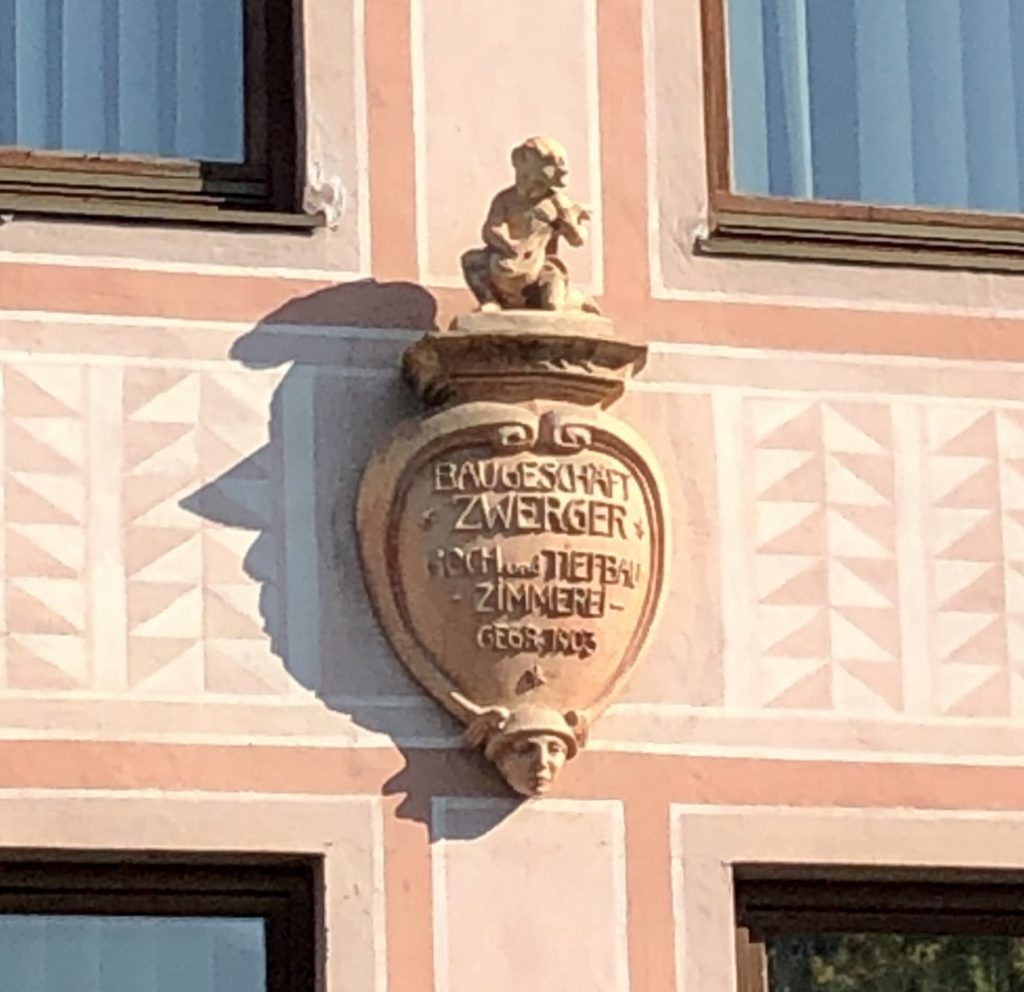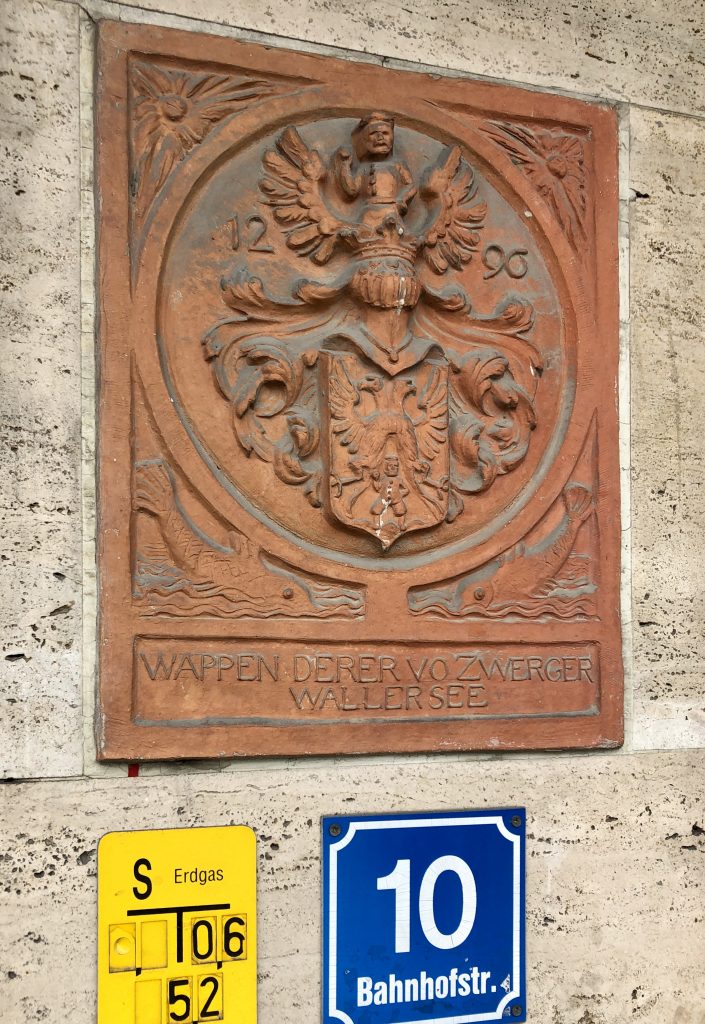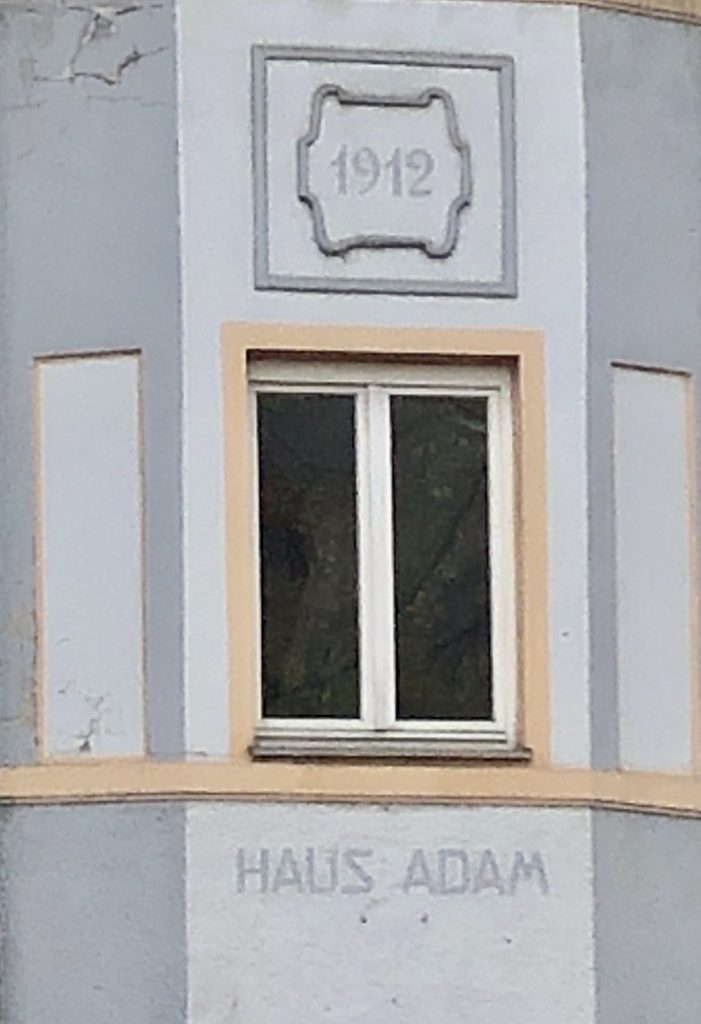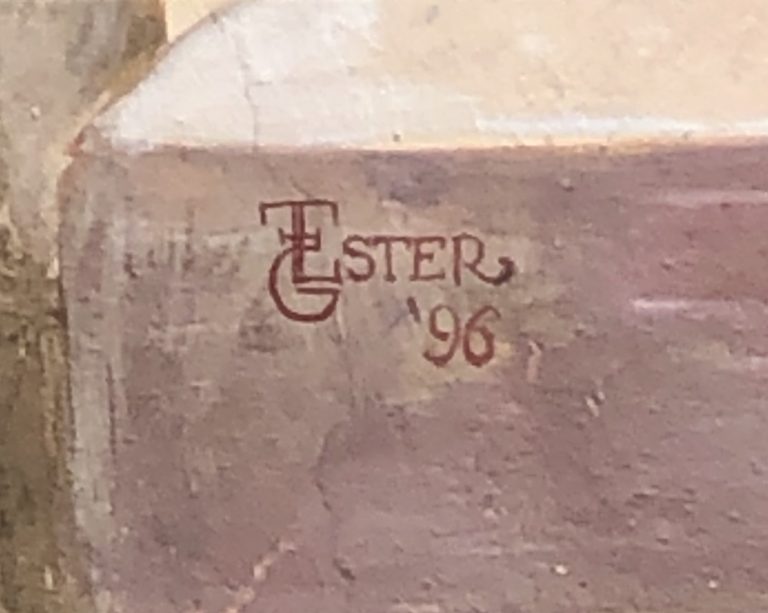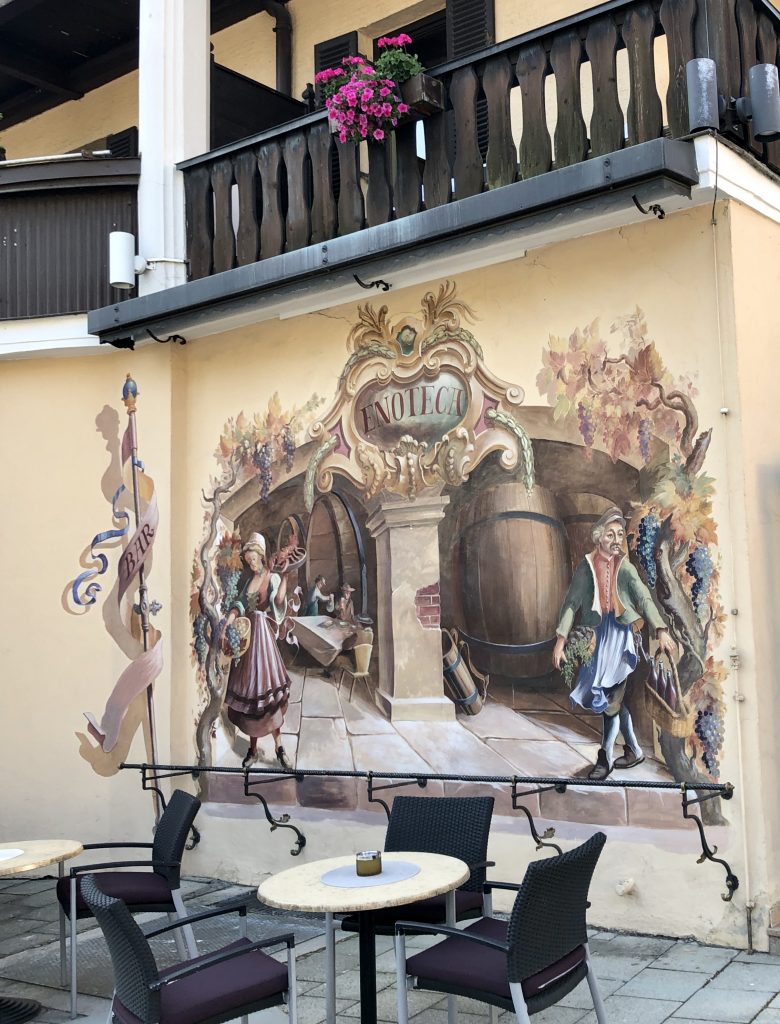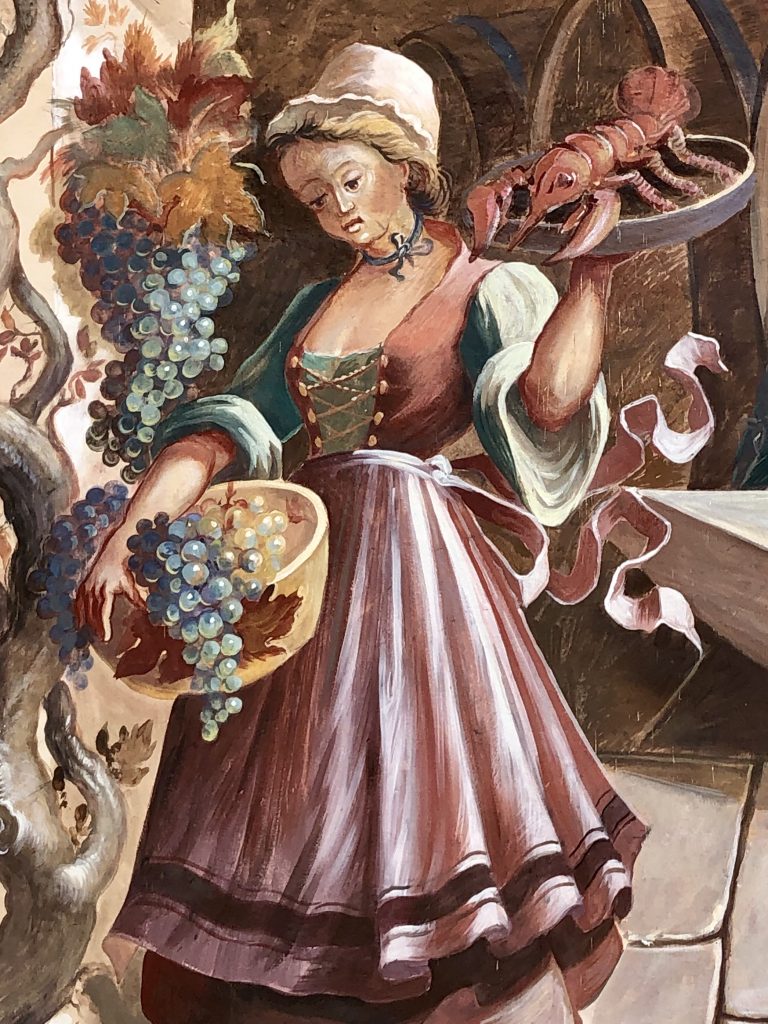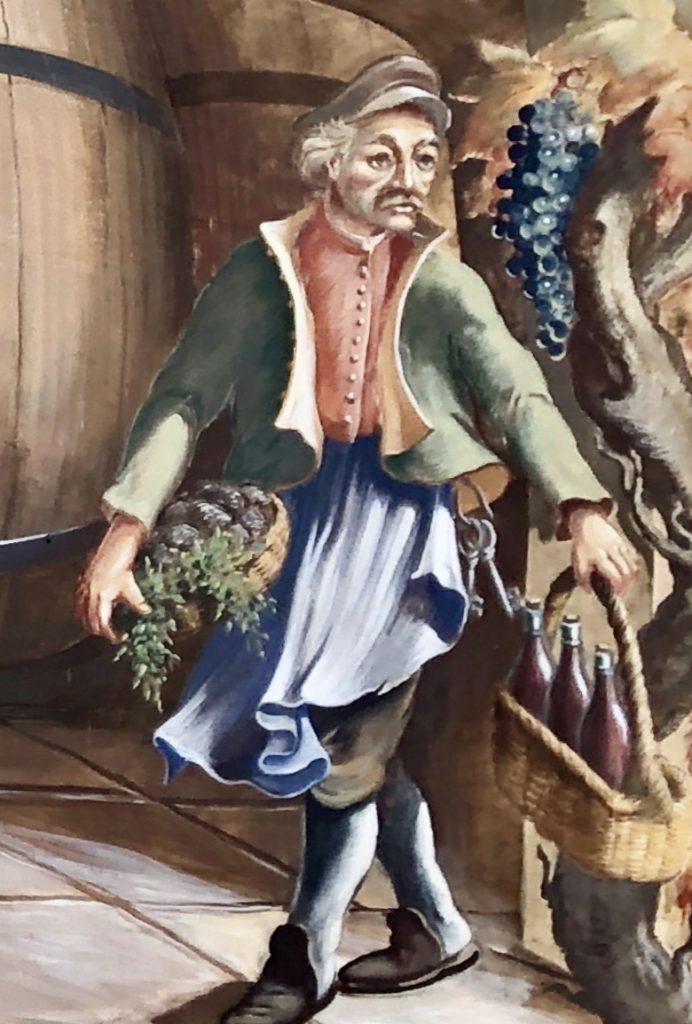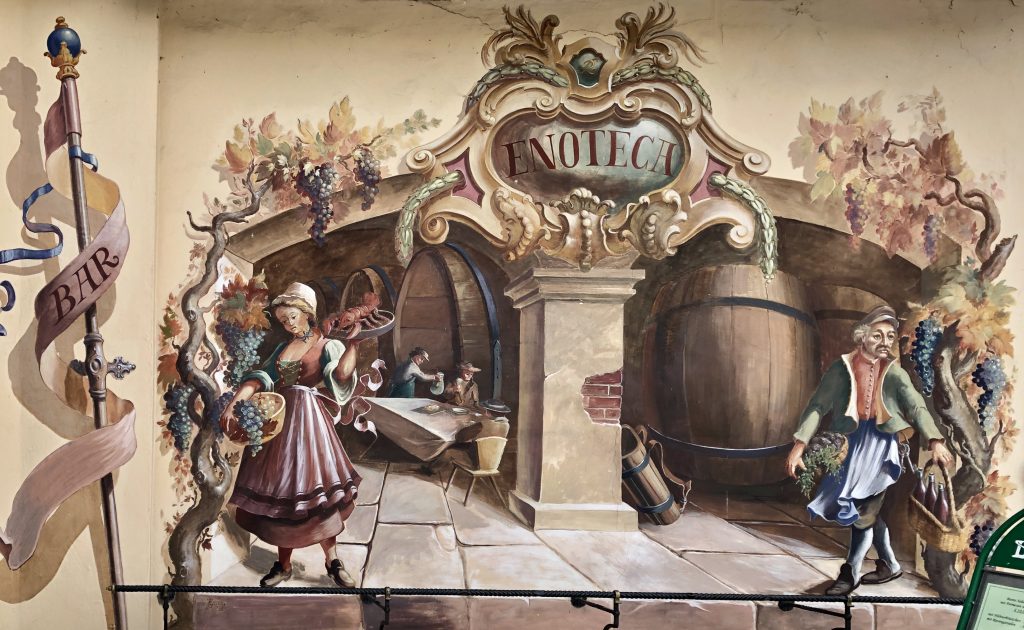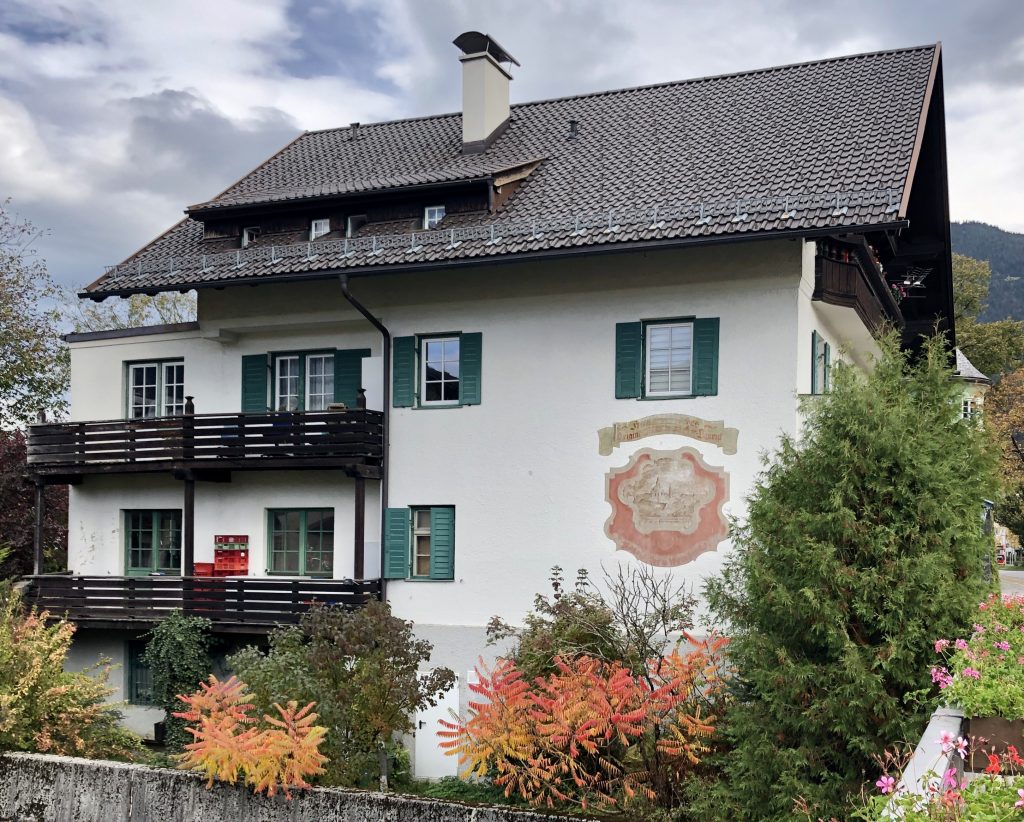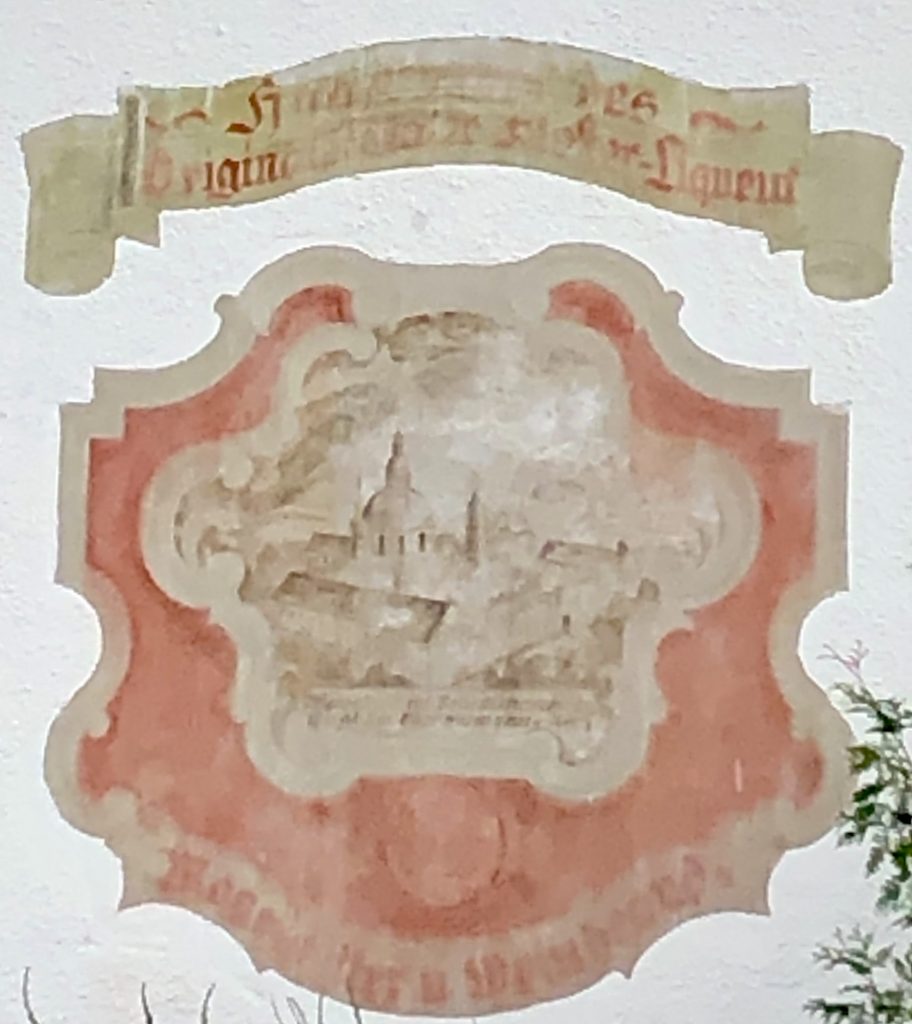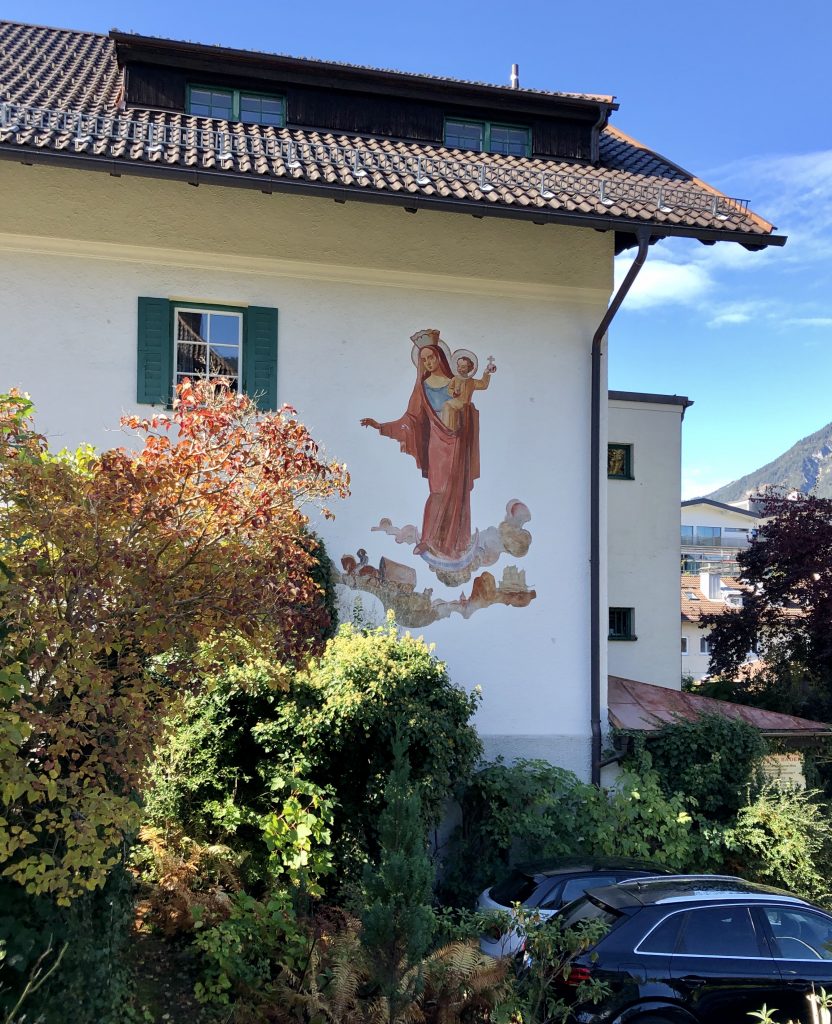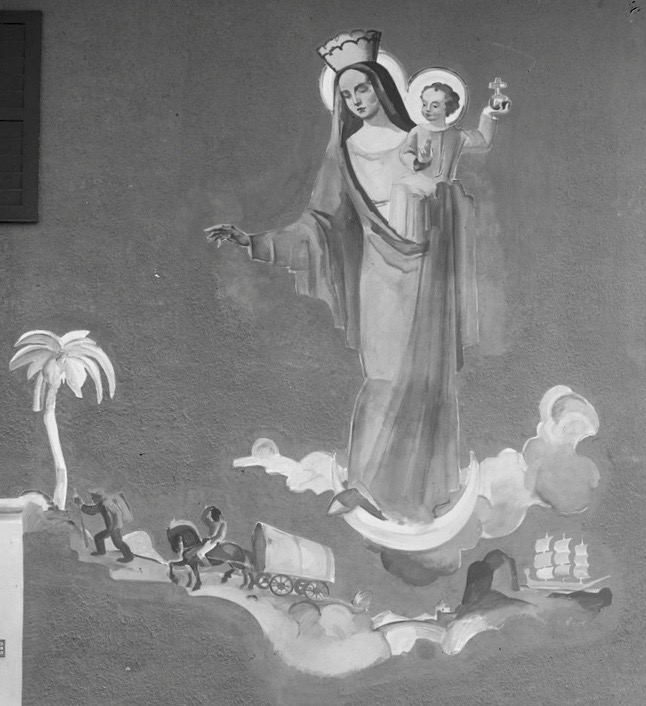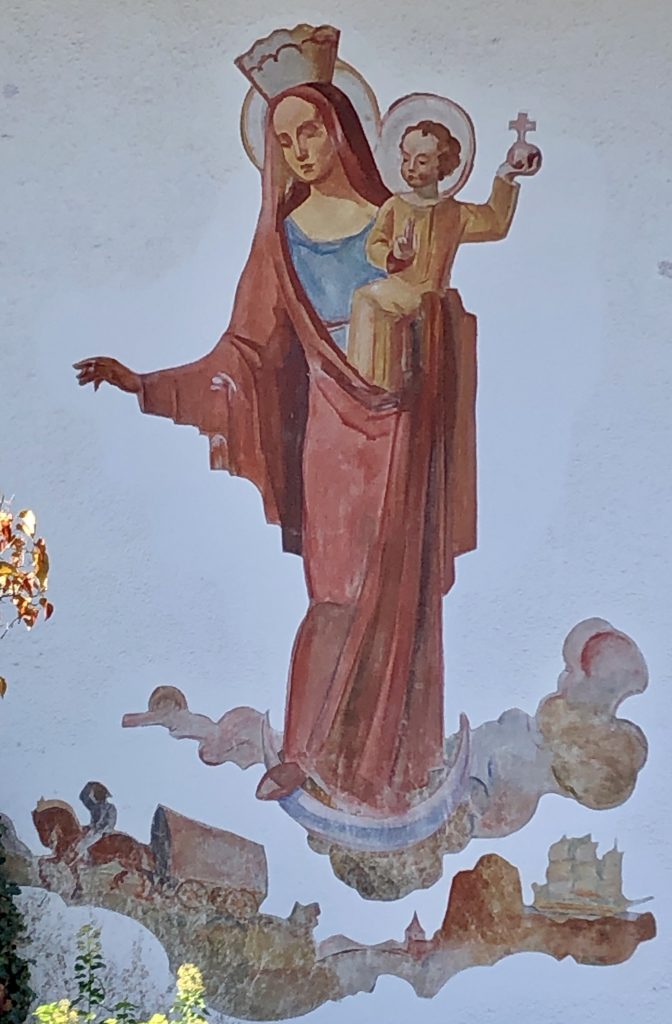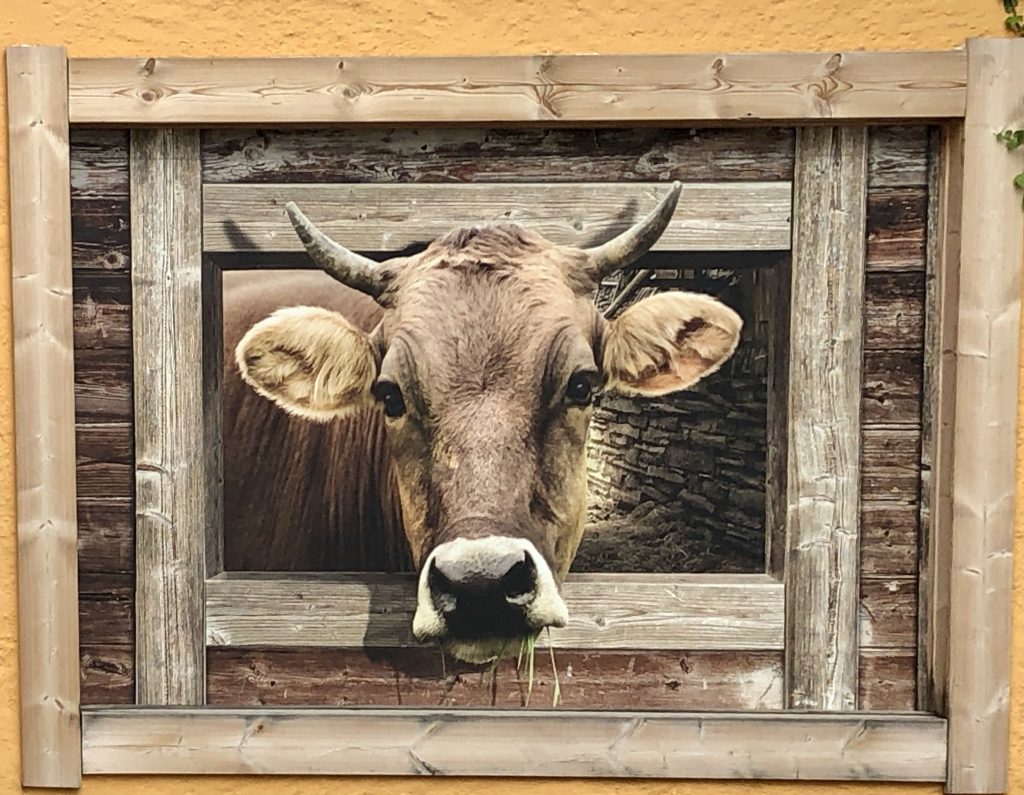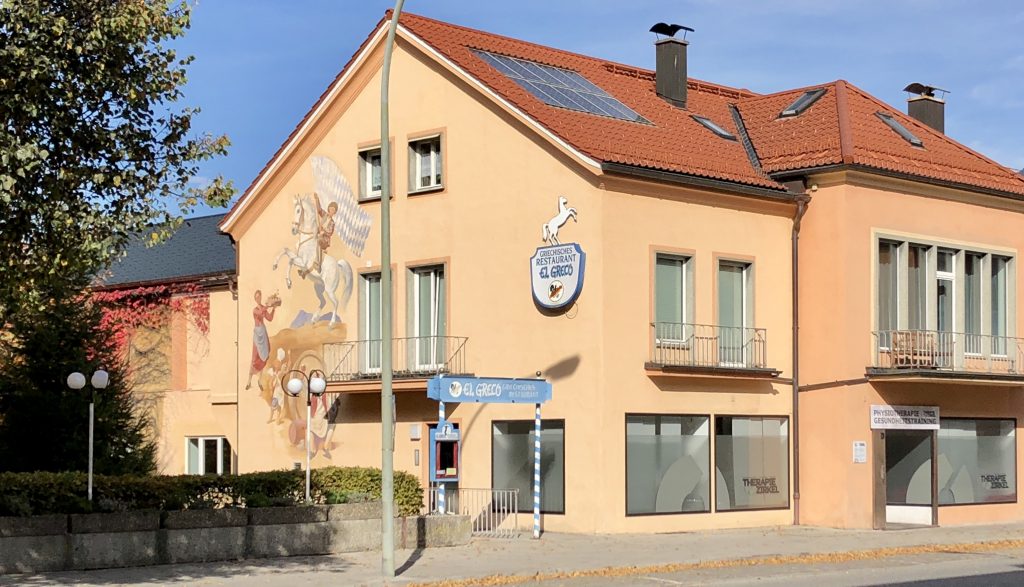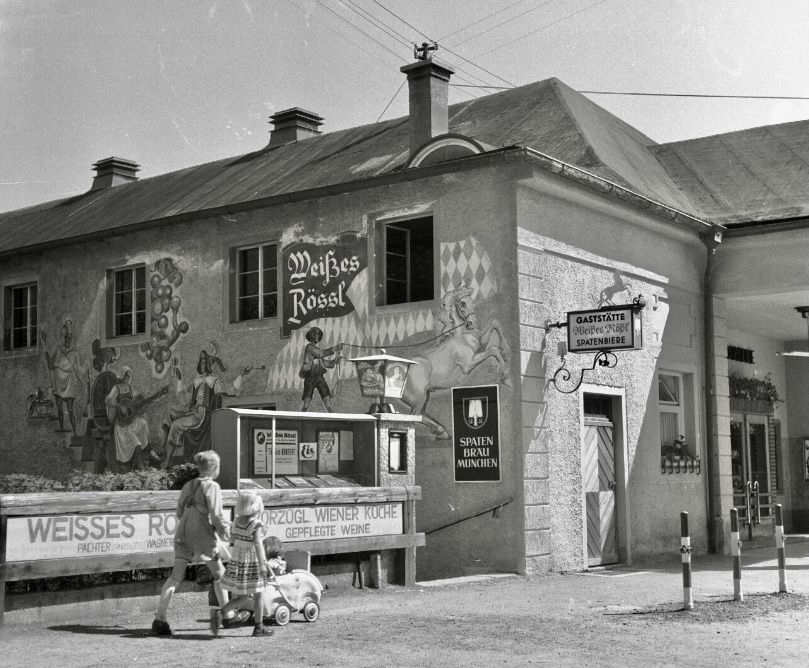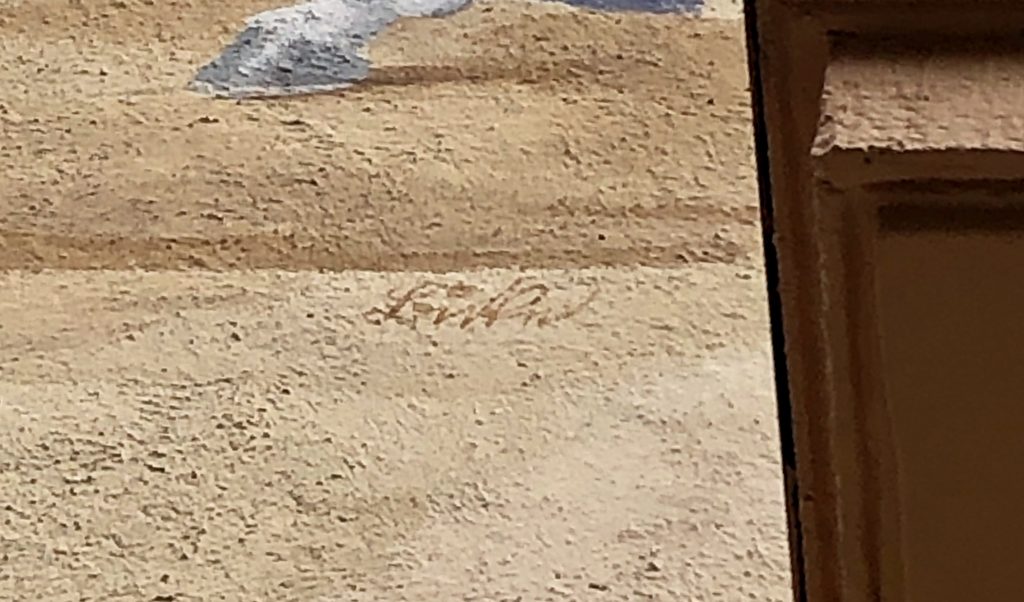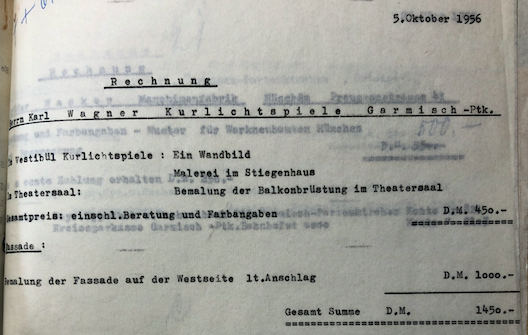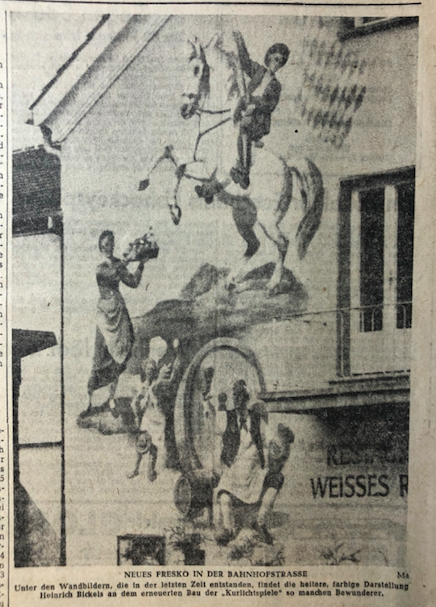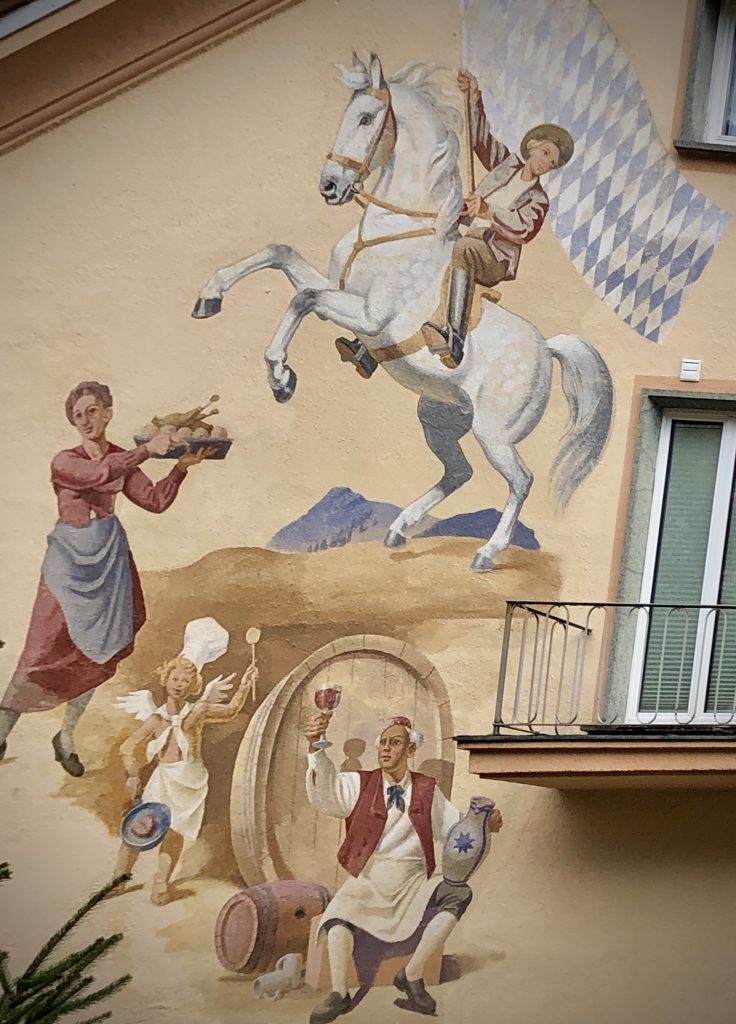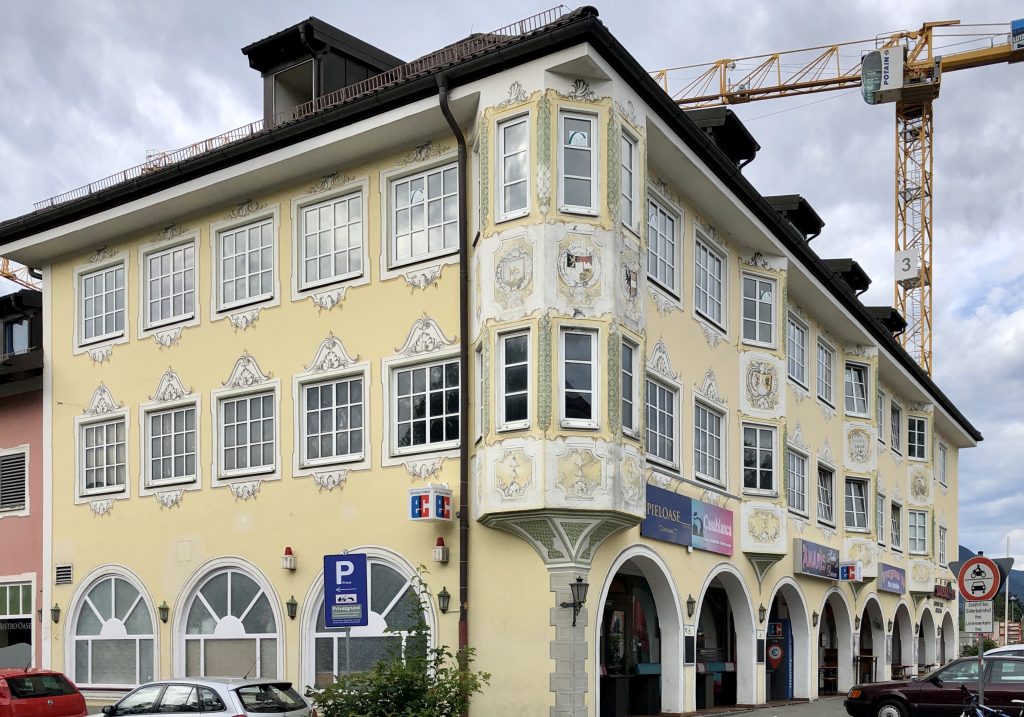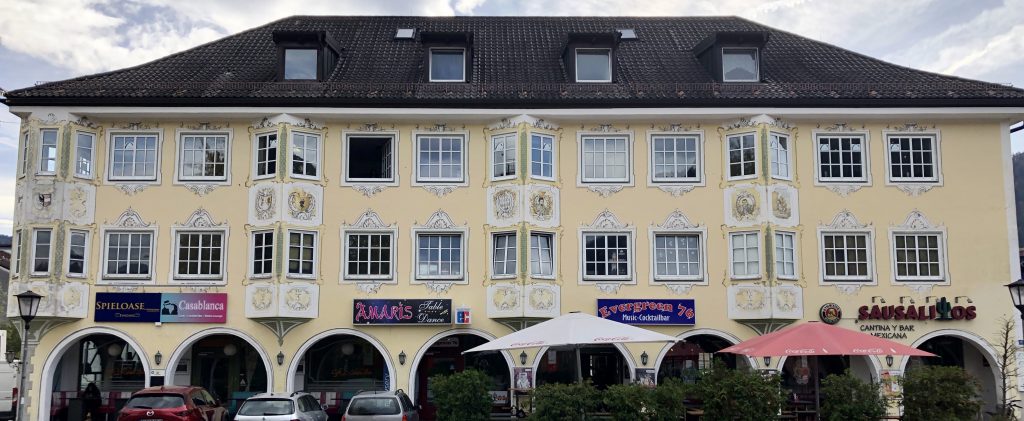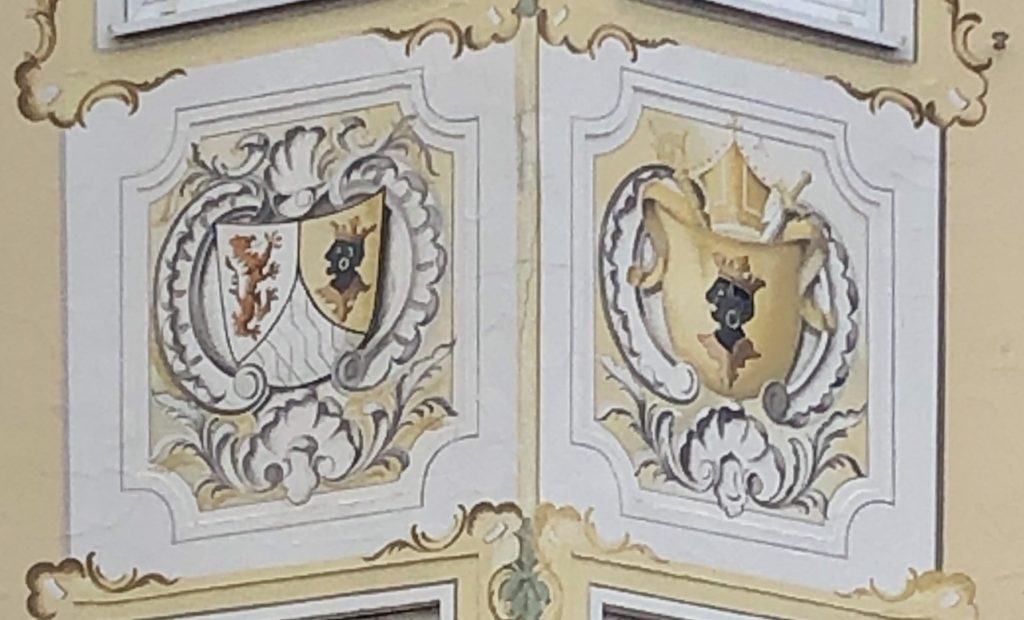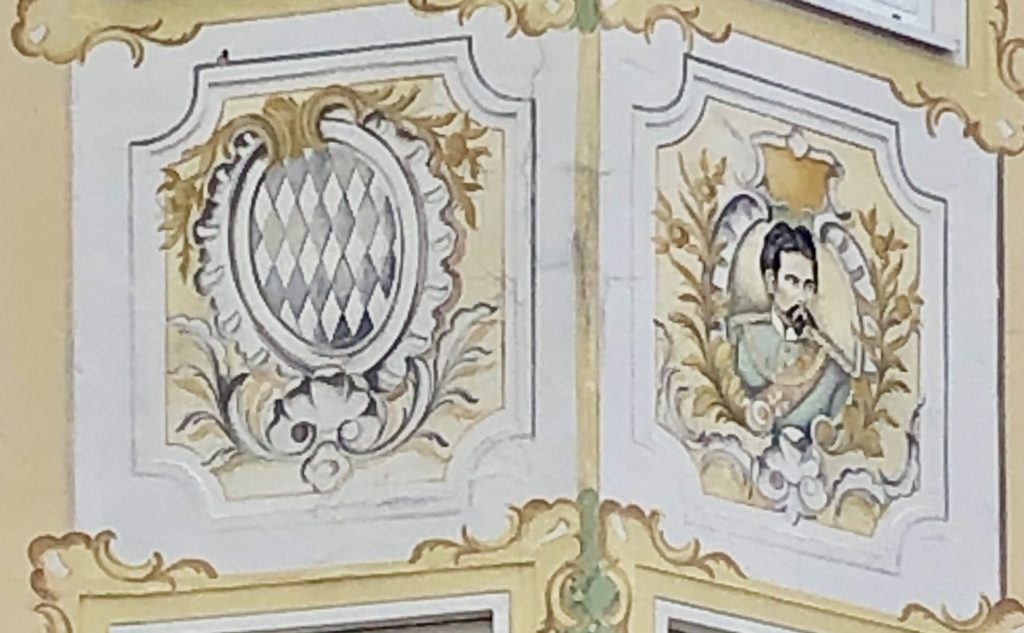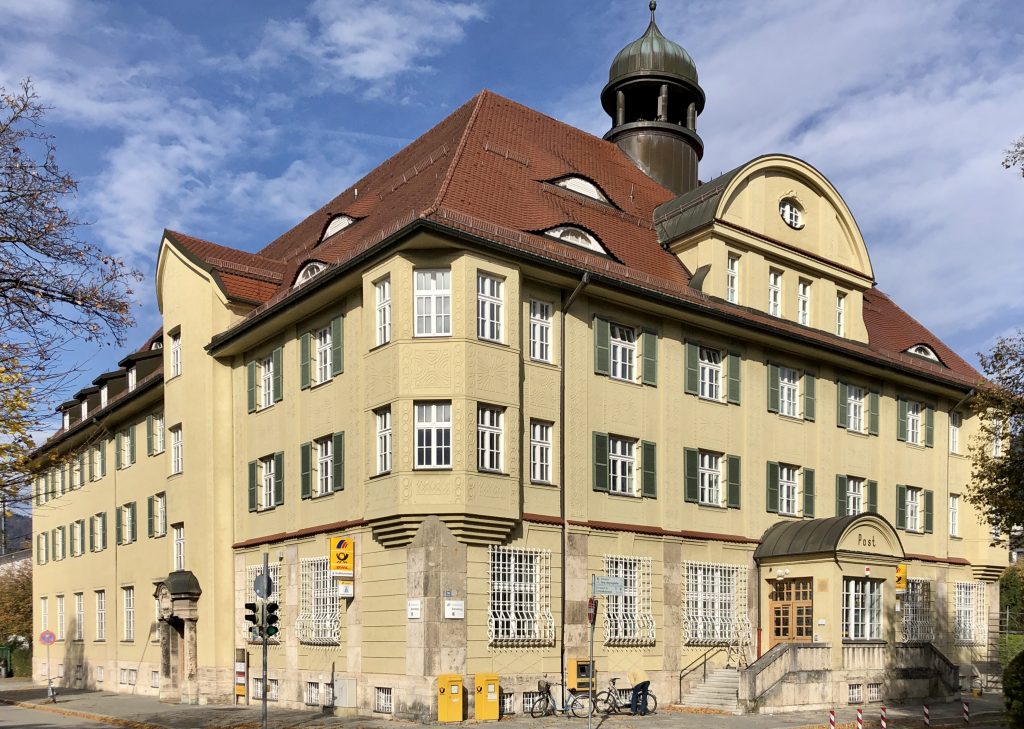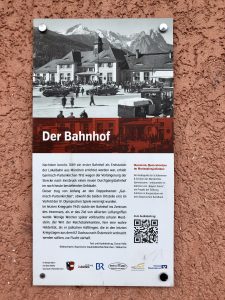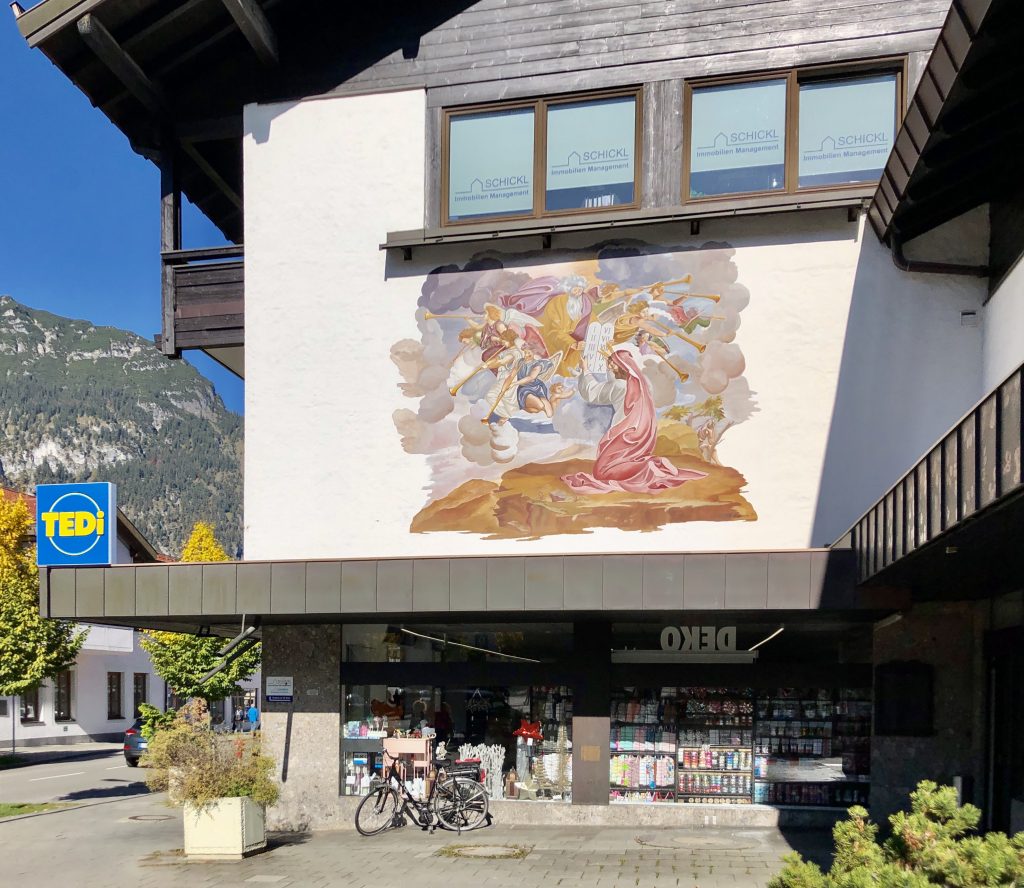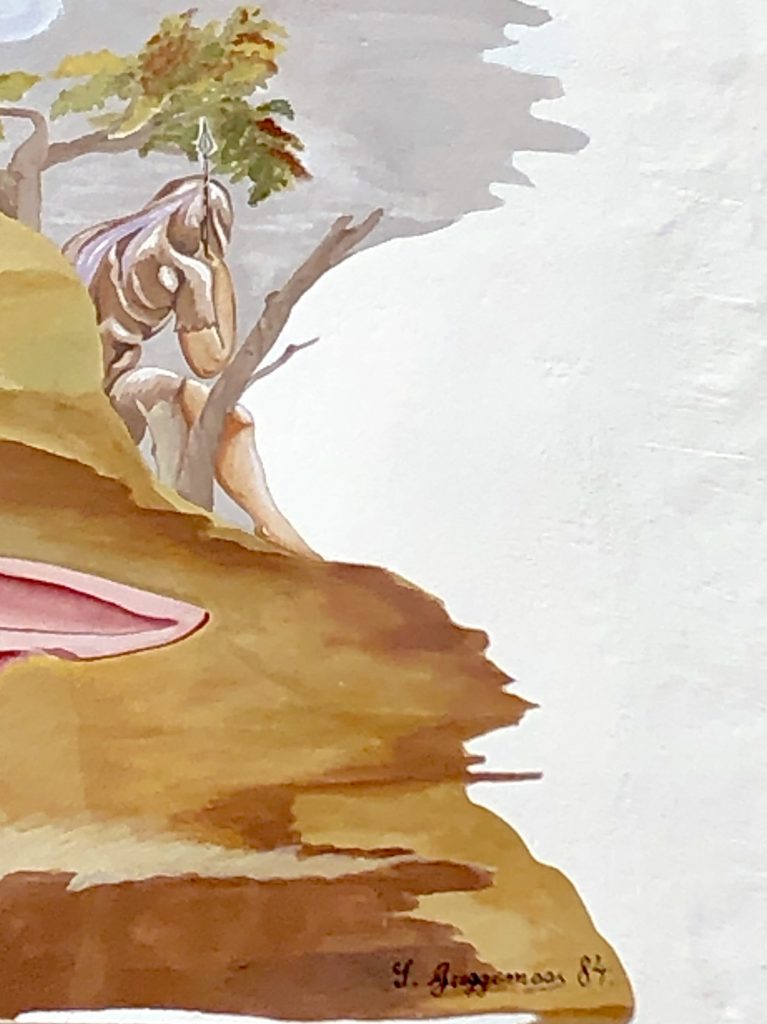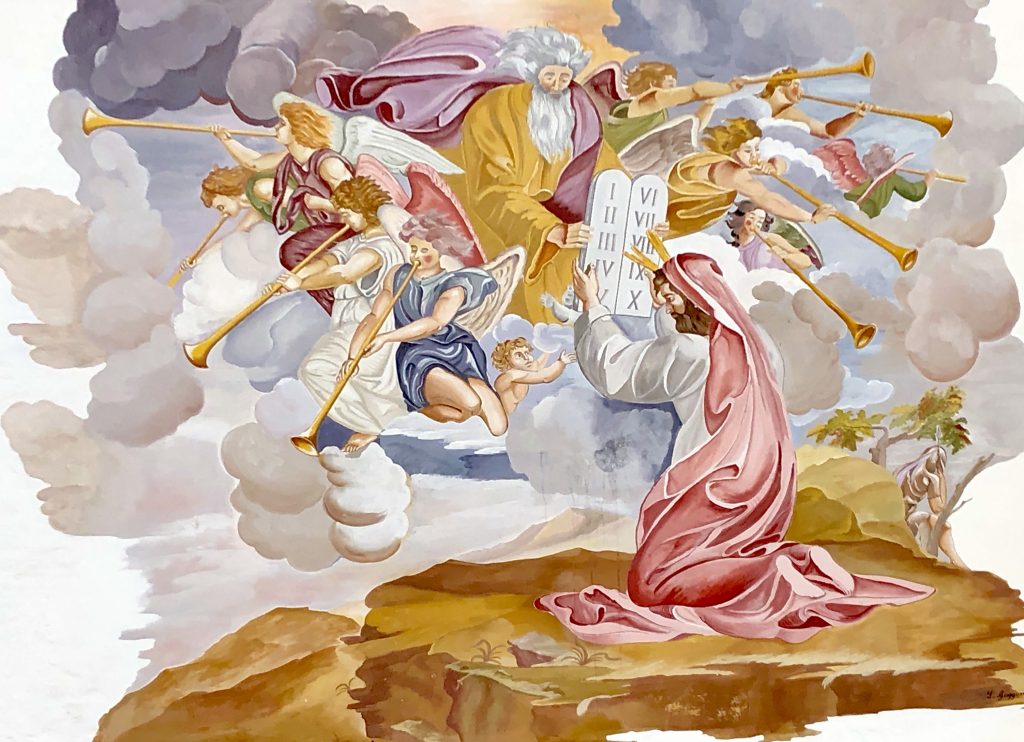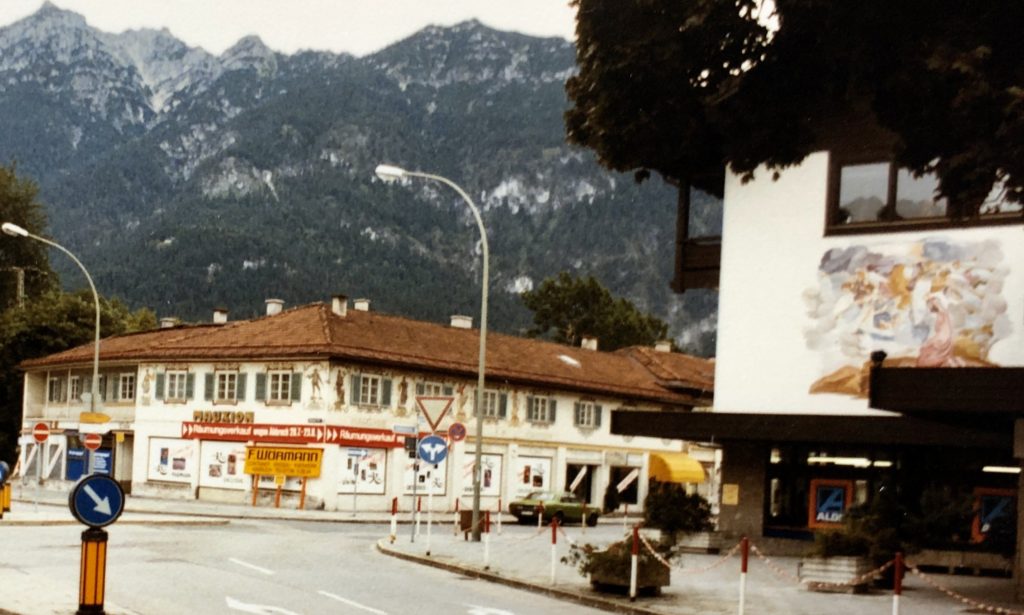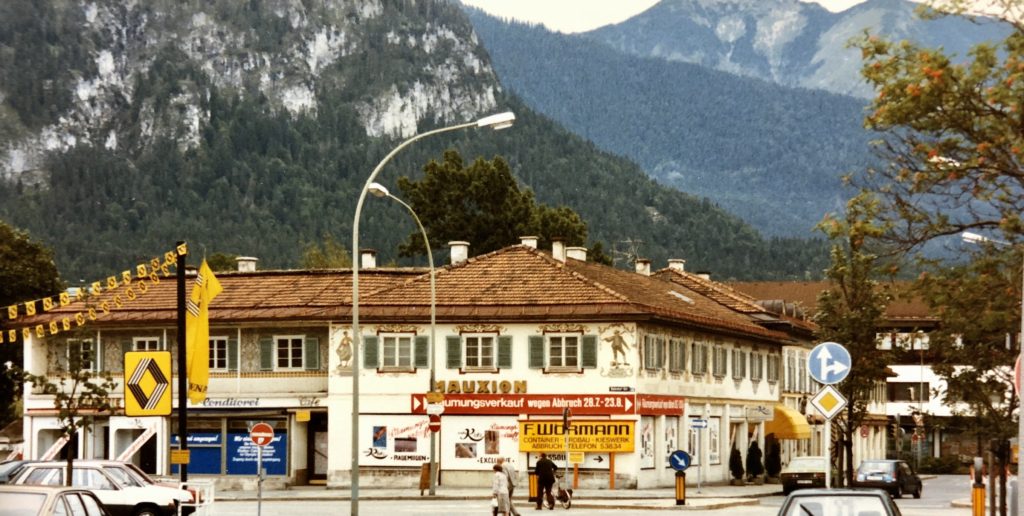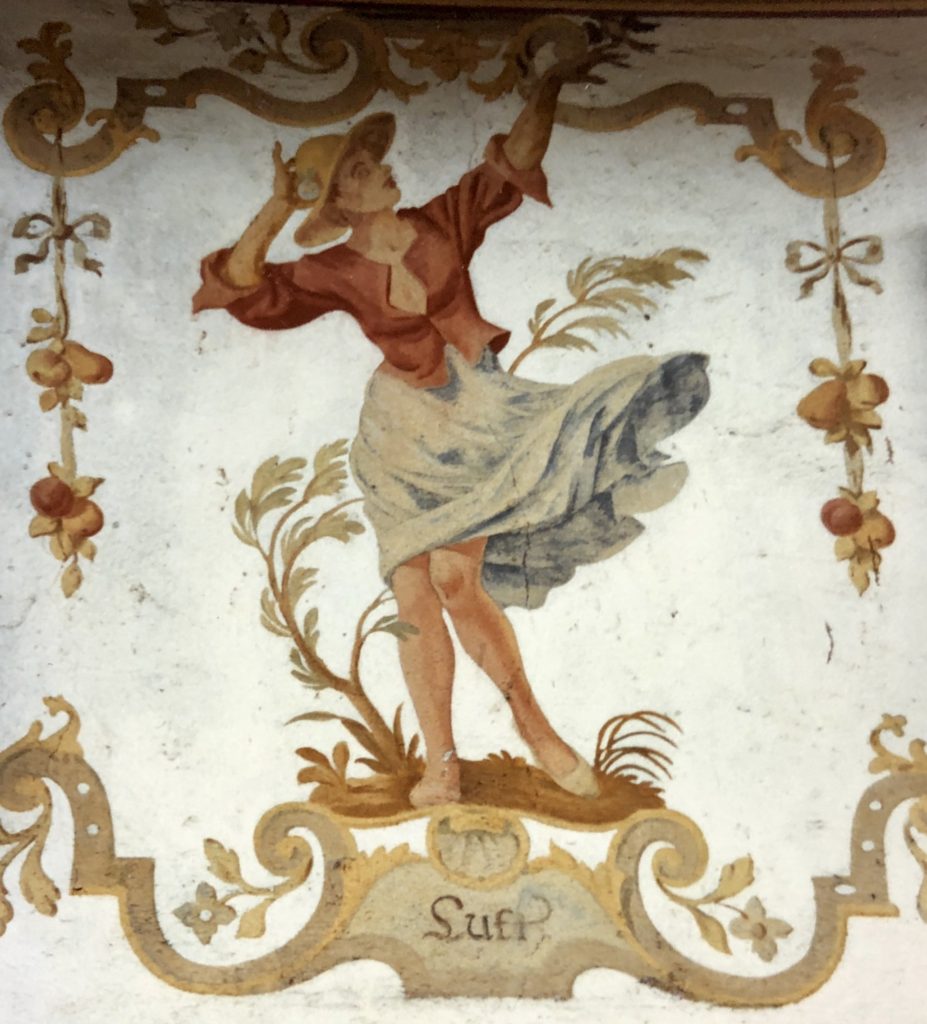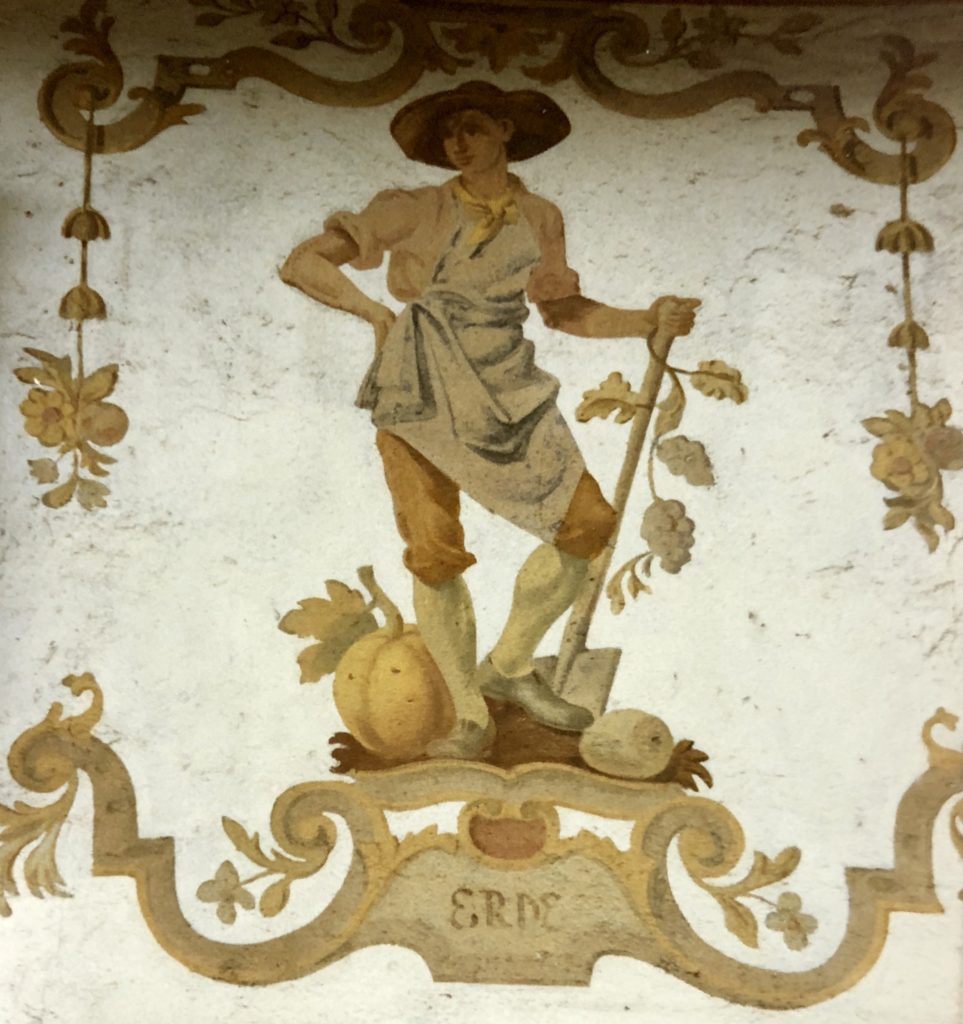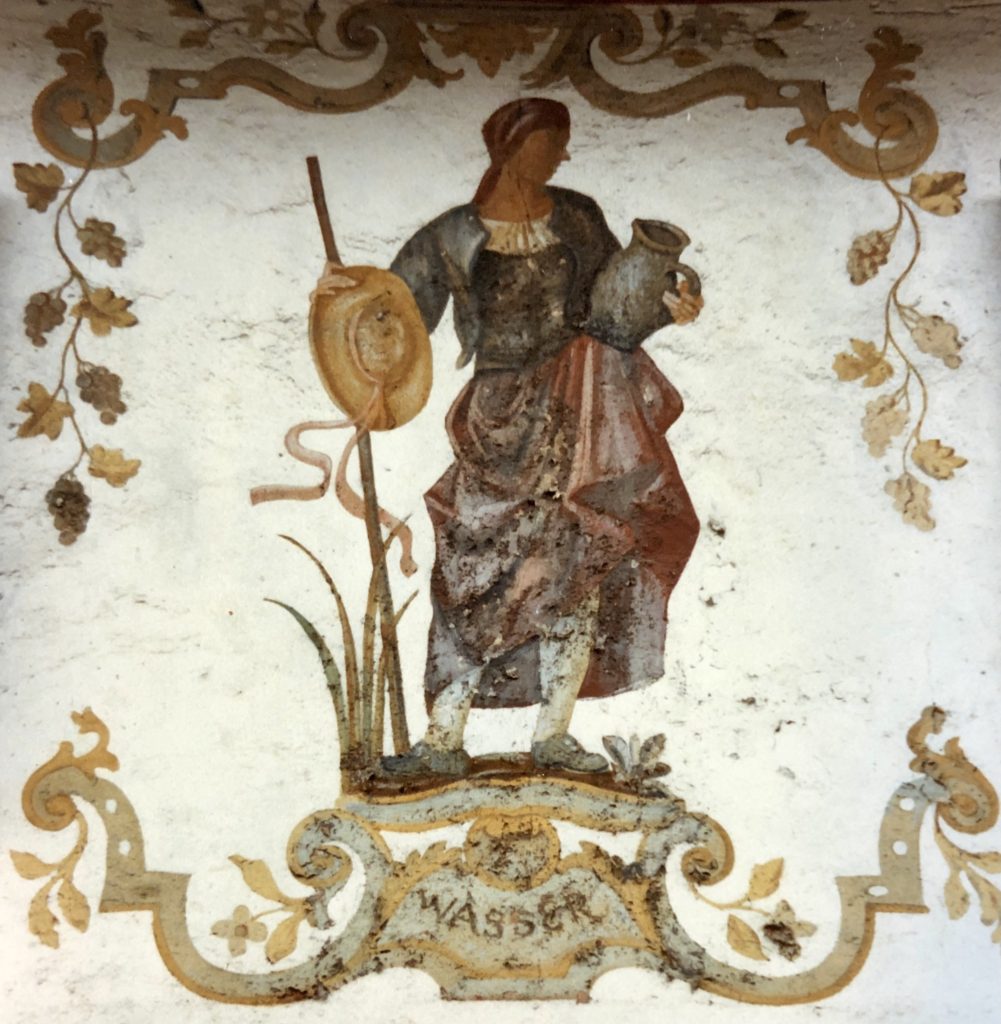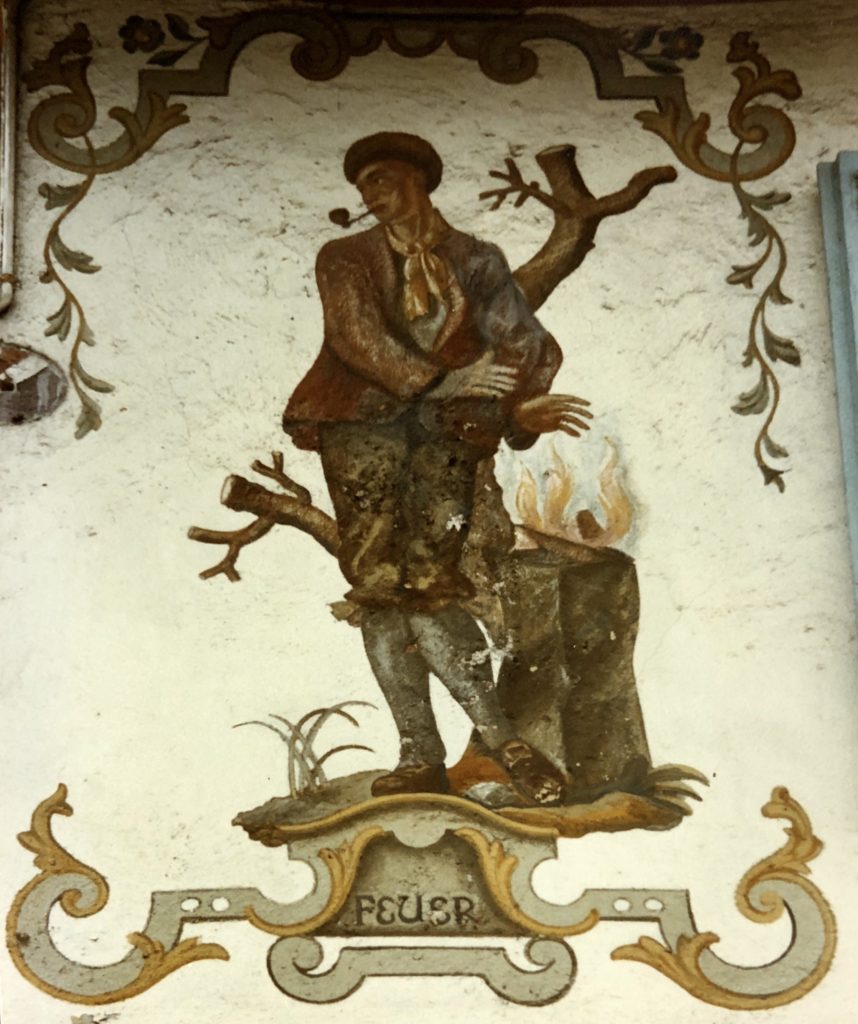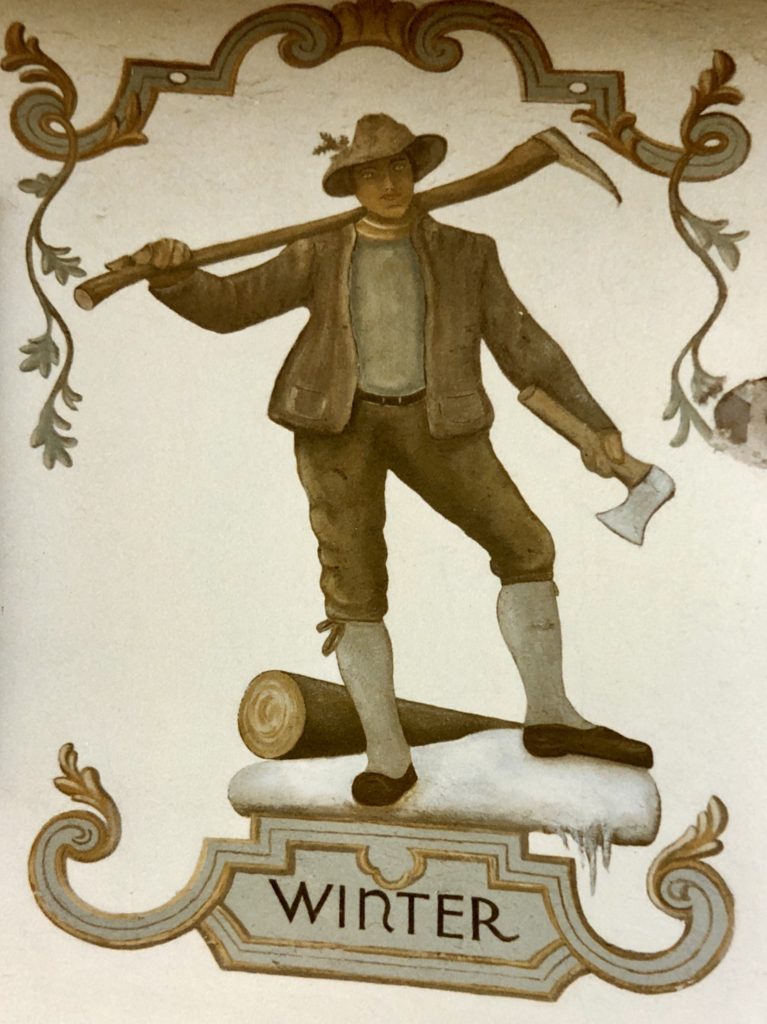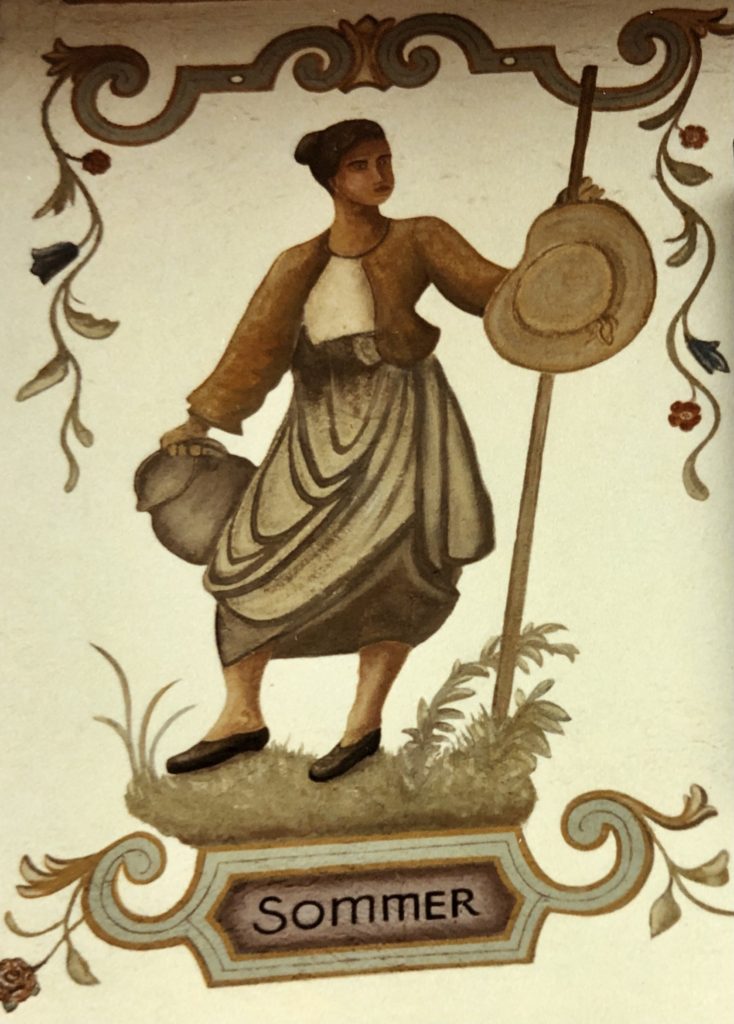- Bierl, Hermann. "Garmisch-Partenkirchen und seine Lüftlmalereien." Mohr, Löwe, Raute. Beiträge zur Geschichte des Landkreises Garmisch-Partenkirchen, Band 18, Verein für Geschichte, Kunst- und Kulturgeschichte im Landkreis Garmisch-Partenkirchen, 2020, p. 38: "Bahnhofstraße 1-4, 6 Entwürfe Prof. J. Wackerle, Ausführung K. Gries".
- Härtl, Rudolf. Heinrich Bickel - Der Freskenmaler von Werdenfels. Adam Verlag, 1990, p. 122: "A 46 Bahnhofstraße 2: Am Erker Tierkreiszeichen; vor 1945".
- Bierl, Hermann. "Garmisch-Partenkirchen und seine Lüftlmalereien." Mohr, Löwe, Raute. Beiträge zur Geschichte des Landkreises Garmisch-Partenkirchen, Band 18, Verein für Geschichte, Kunst- und Kulturgeschichte im Landkreis Garmisch-Partenkirchen, 2020, p. 38: "Bahnhofstraße 1-4, 6 Entwürfe Prof. J. Wackerle, Ausführung K. Gries".
- Härtl, Rudolf. Heinrich Bickel - Der Freskenmaler von Werdenfels. Adam Verlag, 1990, p. 122: "A 26 Bahnhofstraße 3: Ruhe auf der Flucht in barocker Umrahmung; Allegorische Figuren in Fensterumrahmungen; 1935."
- Härtl, Rudolf. Heinrich Bickel - Der Freskenmaler von Werdenfels. Adam Verlag, 1990, p. 122: "A 116 Bahnhofstraße 7, Cafe Kneitinger: Scheinarchitektur mit Balkon, Kaffee servierende Mädchen; Brasilianerin; Kaffeepflanze auf Tablett, Chinese Teestaude pflanzend, Afrikaner mit Kakofrucht; nach 1945."
- Bierl, Hermann. "Garmisch-Partenkirchen und seine Lüftlmalereien." Mohr, Löwe, Raute. Beiträge zur Geschichte des Landkreises Garmisch-Partenkirchen, Band 18, Verein für Geschichte, Kunst- und Kulturgeschichte im Landkreis Garmisch-Partenkirchen, 2020, p. 42: "106 Bahnhofstraße 22 Ettaler Kloster-Liqueur Magenbitter und Weinbrand".
- Kaiser, Wolfgang. "Die tote Herzenskönigin der Unterwelt". Garmisch-Partenkirchner Tagblatt, Merkur.de, 2009-04-09, https://www.merkur.de/lokales/regionen/tote-herzenskoenigin-unterwelt-162120.html. Last Accessed 11 May 2021: "Das "Weiße Rössl" im Untergeschoss der einstigen Kurlichtspiele an der Bahnhofstraße neben der Partnachbrücke in Partenkirchen gibt es heute noch und beherbergt ein griechisches Restaurant."
- Heinrich Bickel's bill for services dated October 5, 1956; source: Markt Archiv Ga-Pa, Depositum Heinrich Bickel, Rechnungen 1954-60
- Bierl, Hermann. "Garmisch-Partenkirchen und seine Lüftlmalereien." Mohr, Löwe, Raute. Beiträge zur Geschichte des Landkreises Garmisch-Partenkirchen, Band 18, Verein für Geschichte, Kunst- und Kulturgeschichte im Landkreis Garmisch-Partenkirchen, 2020, pp. 42-43: "103 Bayern 104 Bischof von Freising 105 Ludwig II Bahnhofstraße 25 108 FJS KE 109 Sankt Martin 110 Werdenfels Bahnhofstraße 25 K. Erhardt".
- Härtl, Rudolf. Heinrich Bickel - Der Freskenmaler von Werdenfels. Adam Verlag, 1990, p. 136: "Landschaftsstraße, „Buntes Haus”: Allegorische Gestalten, Handwerker, Scheinarchitektur, Pflanzenornamente."
- Härtl, Rudolf. Heinrich Bickel - Der Freskenmaler von Werdenfels. Adam Verlag, 1990, p. 11: "Bereits im Jahre 1913 übersiedelte die Familie des Künstlers nach Garmisch-Partenkirchen und bezog eine Mietwohnung in der „Villa Rosa”, die dem Metzgermeister Falterer gehörte und gegenüber dem heutigen „Bunten Haus” gelegen war."
Lüftlmalerei
A street by street guide to the fresco and facade paintings in the Garmisch-Partenkirchen district
